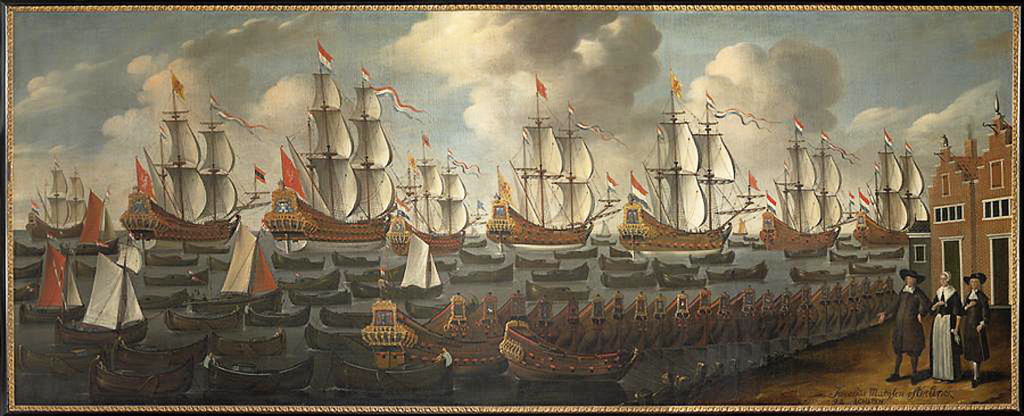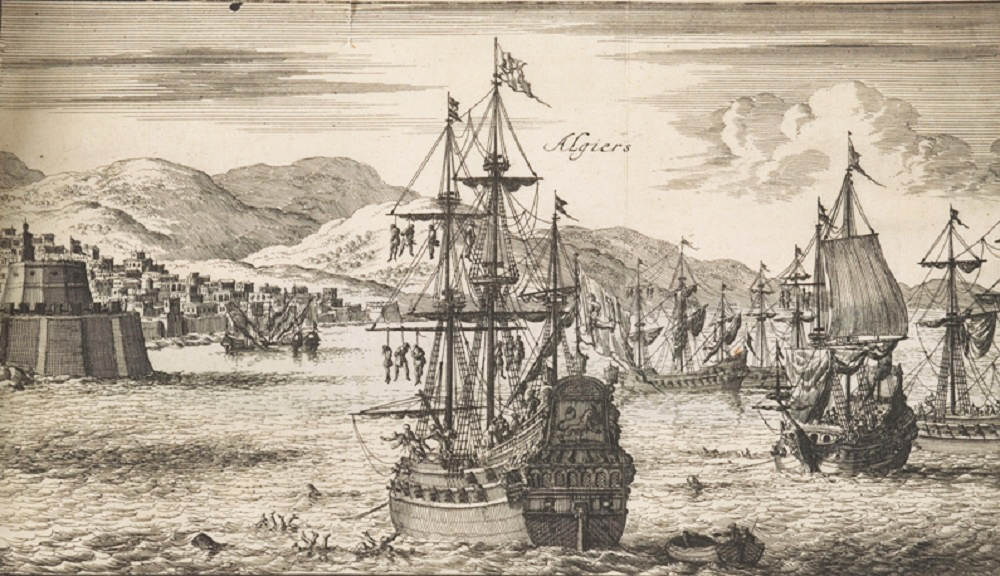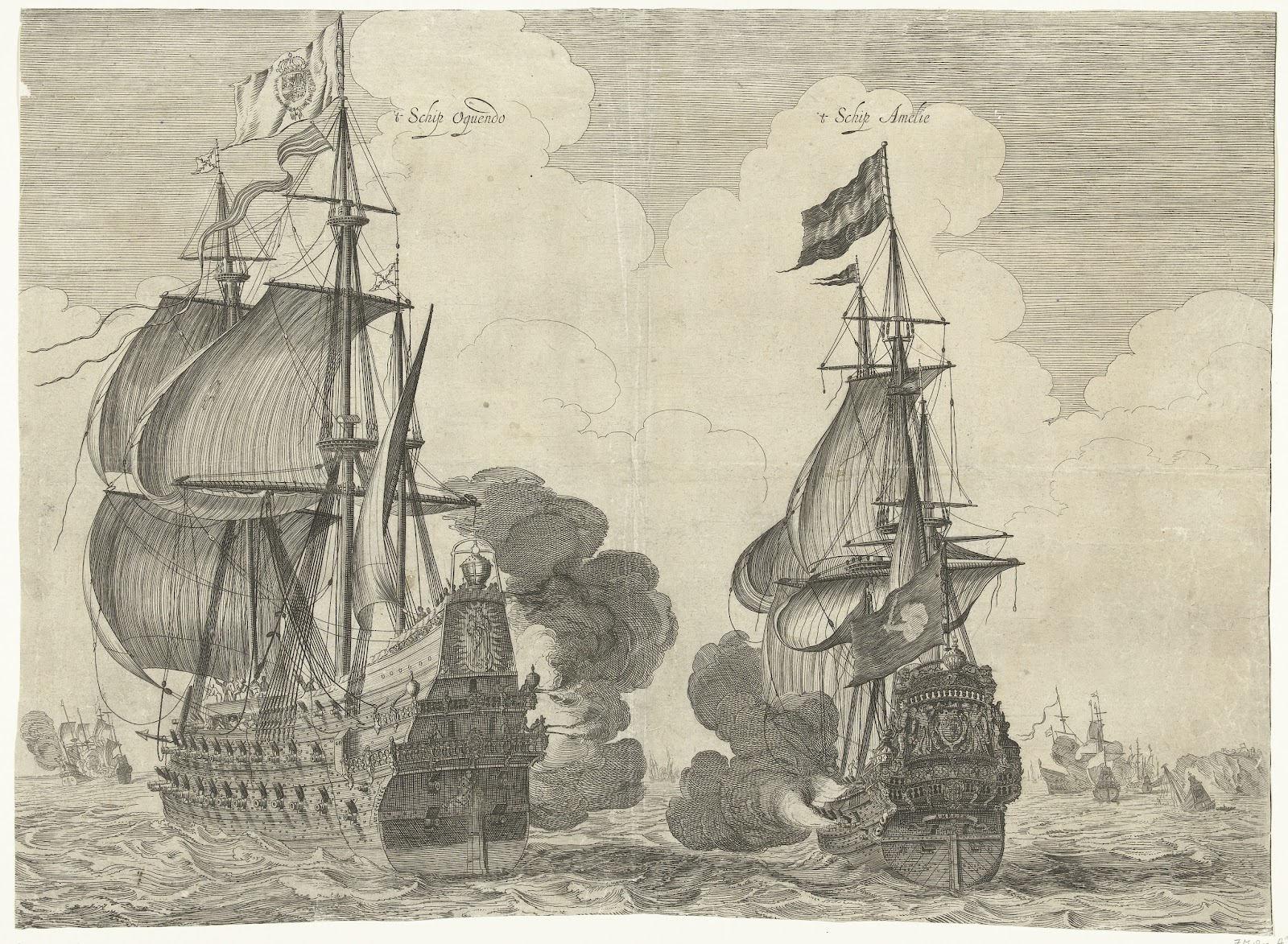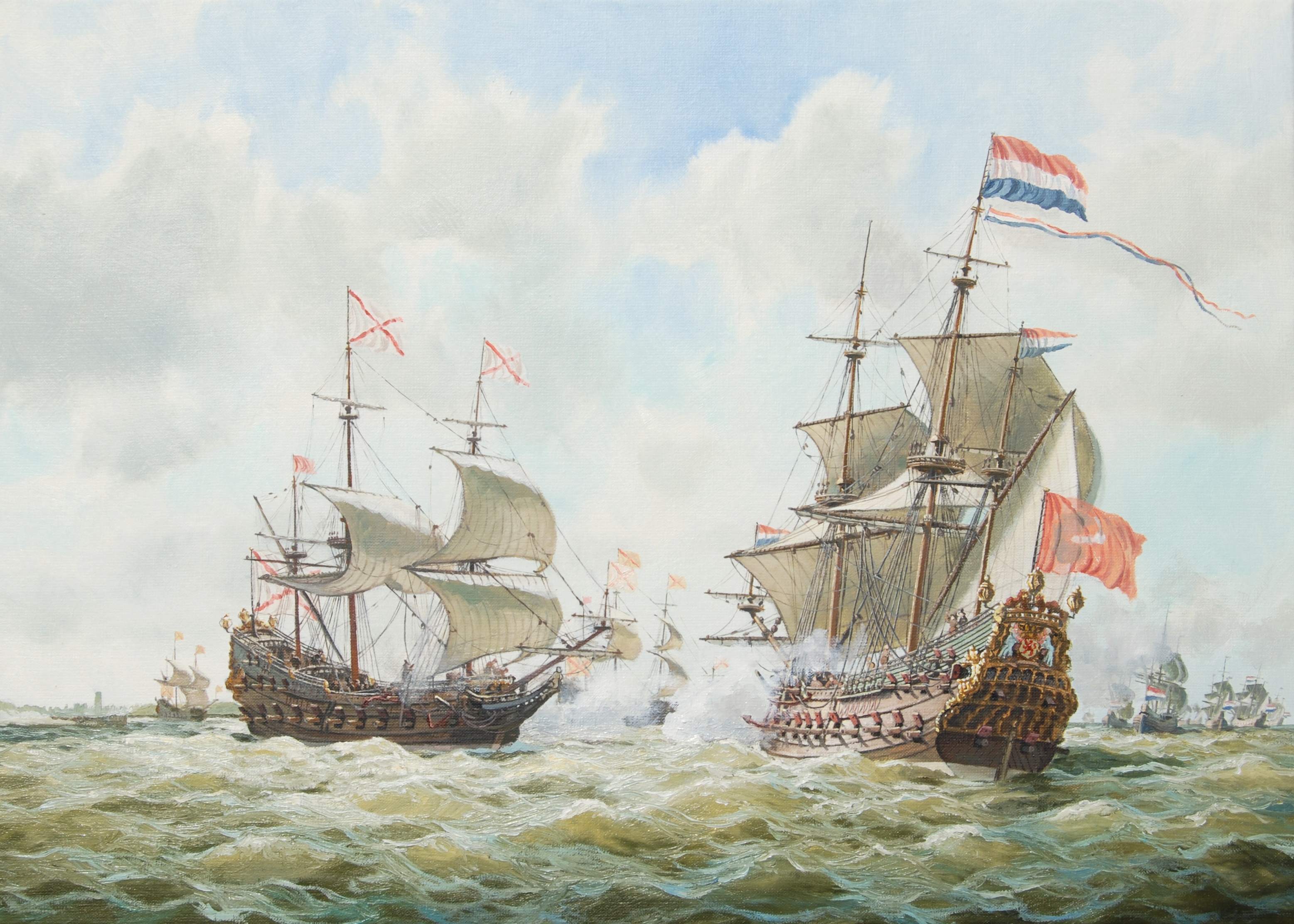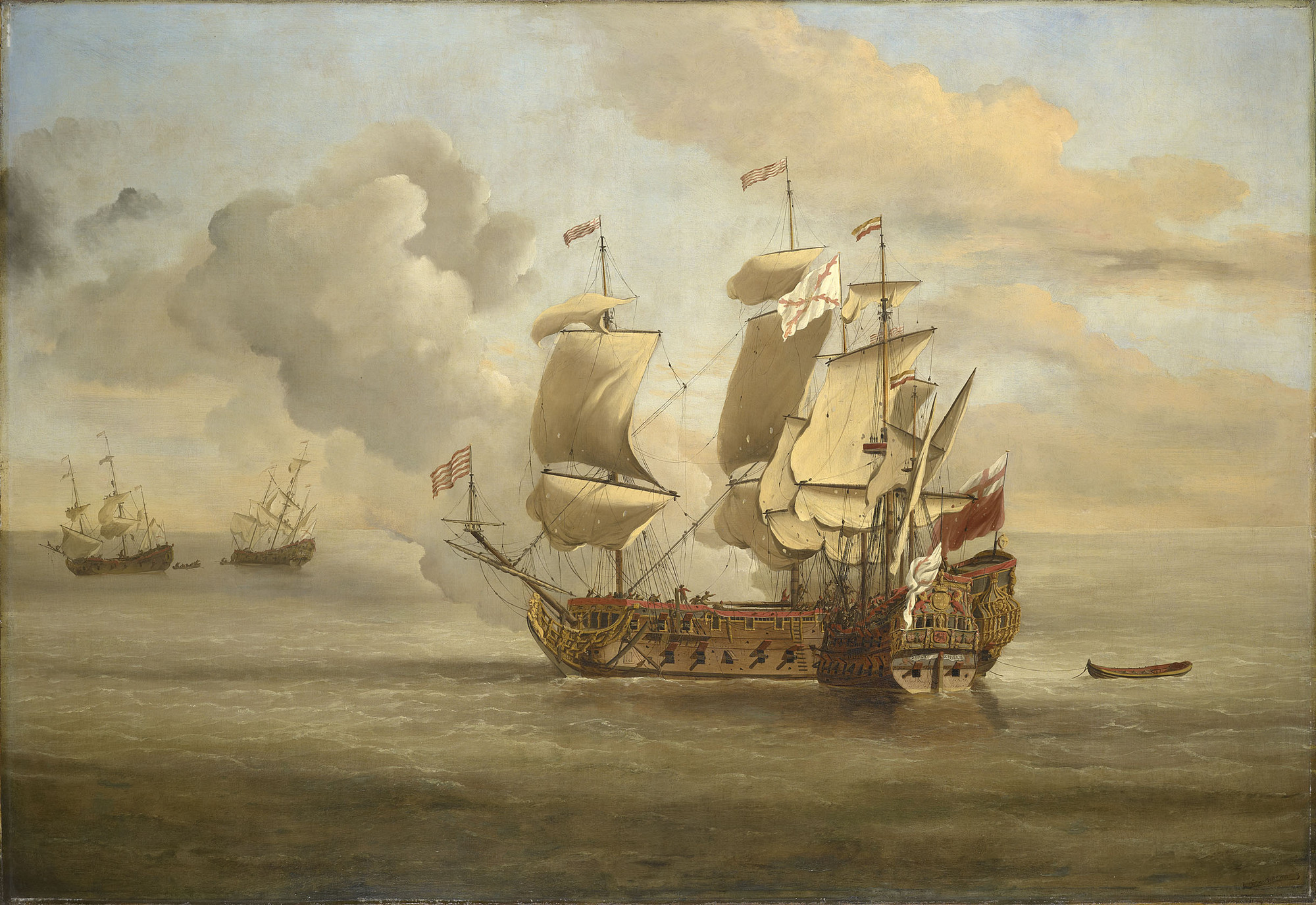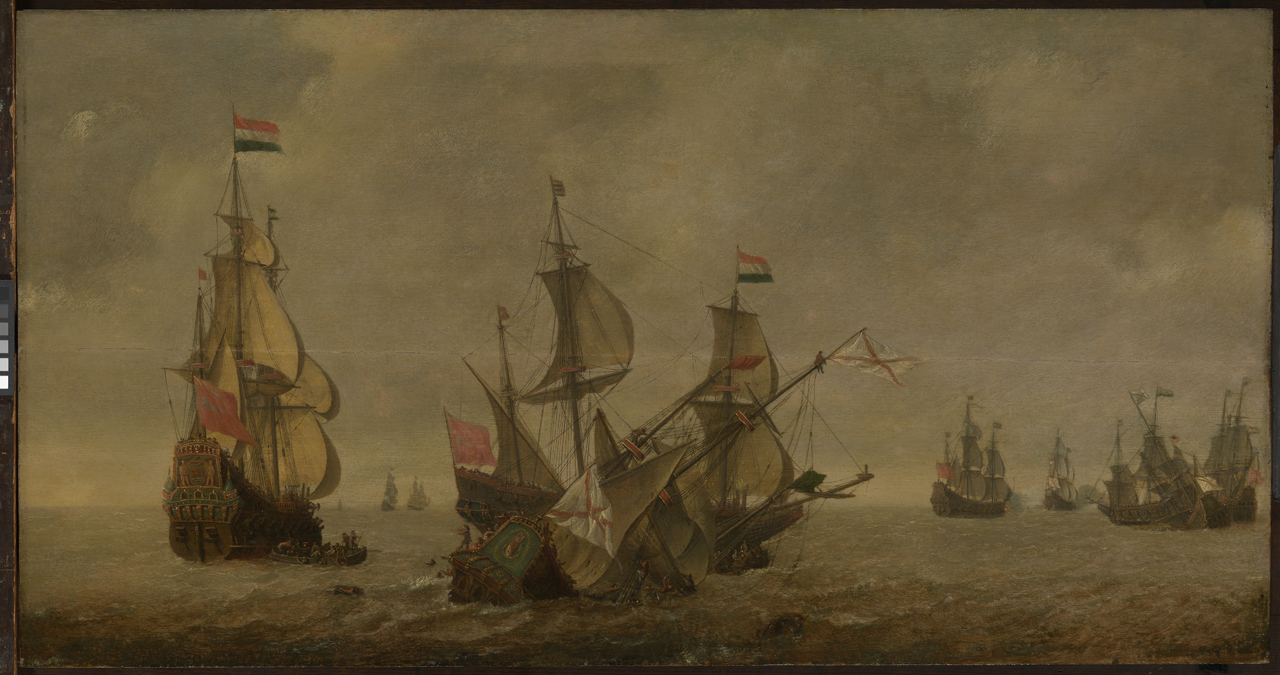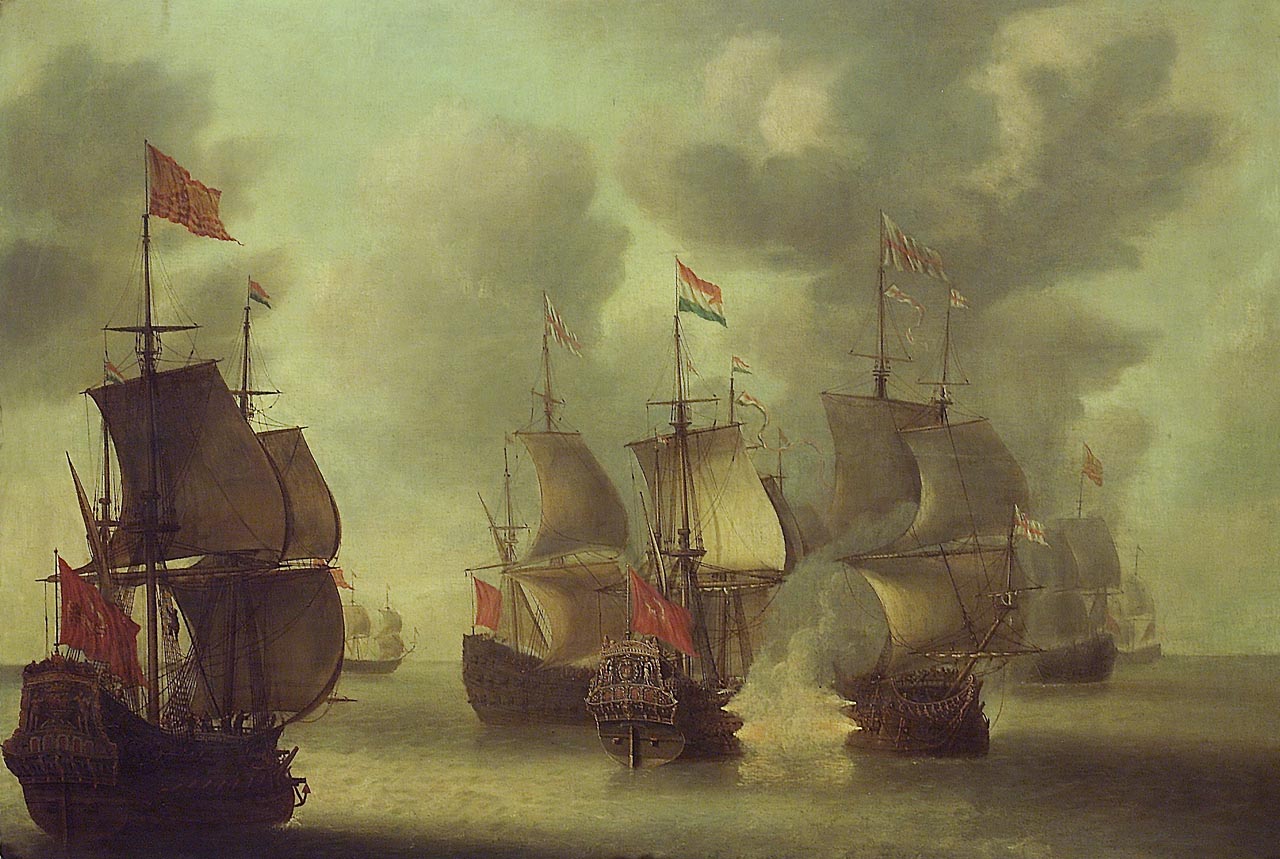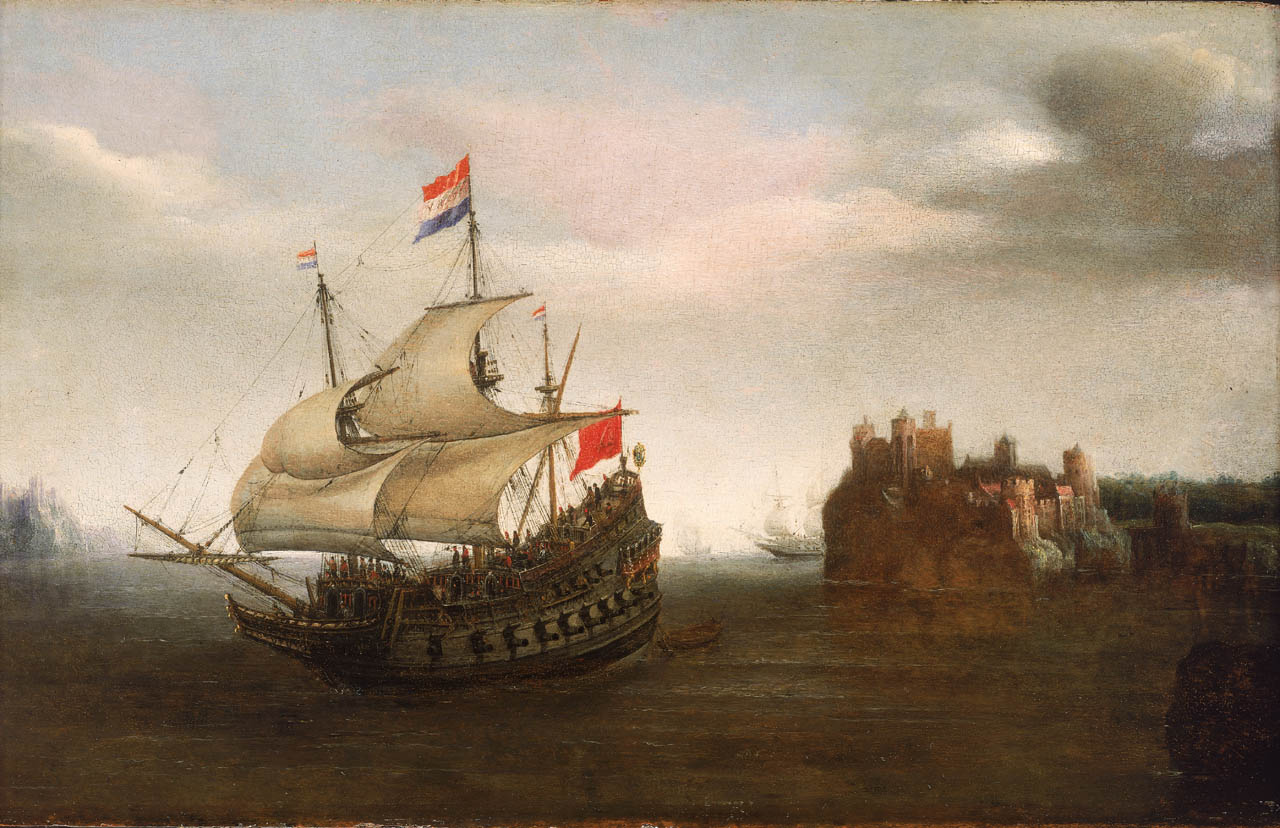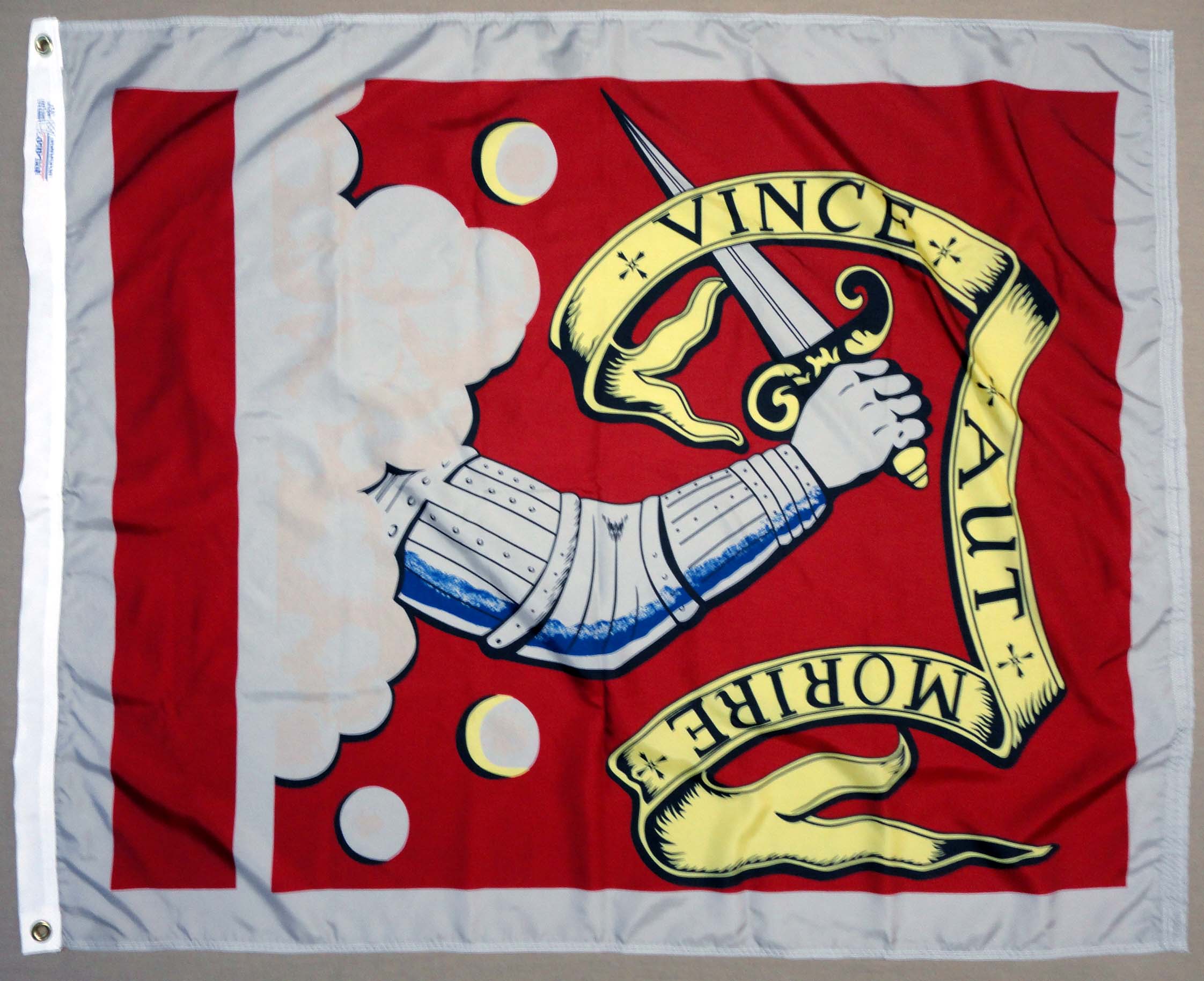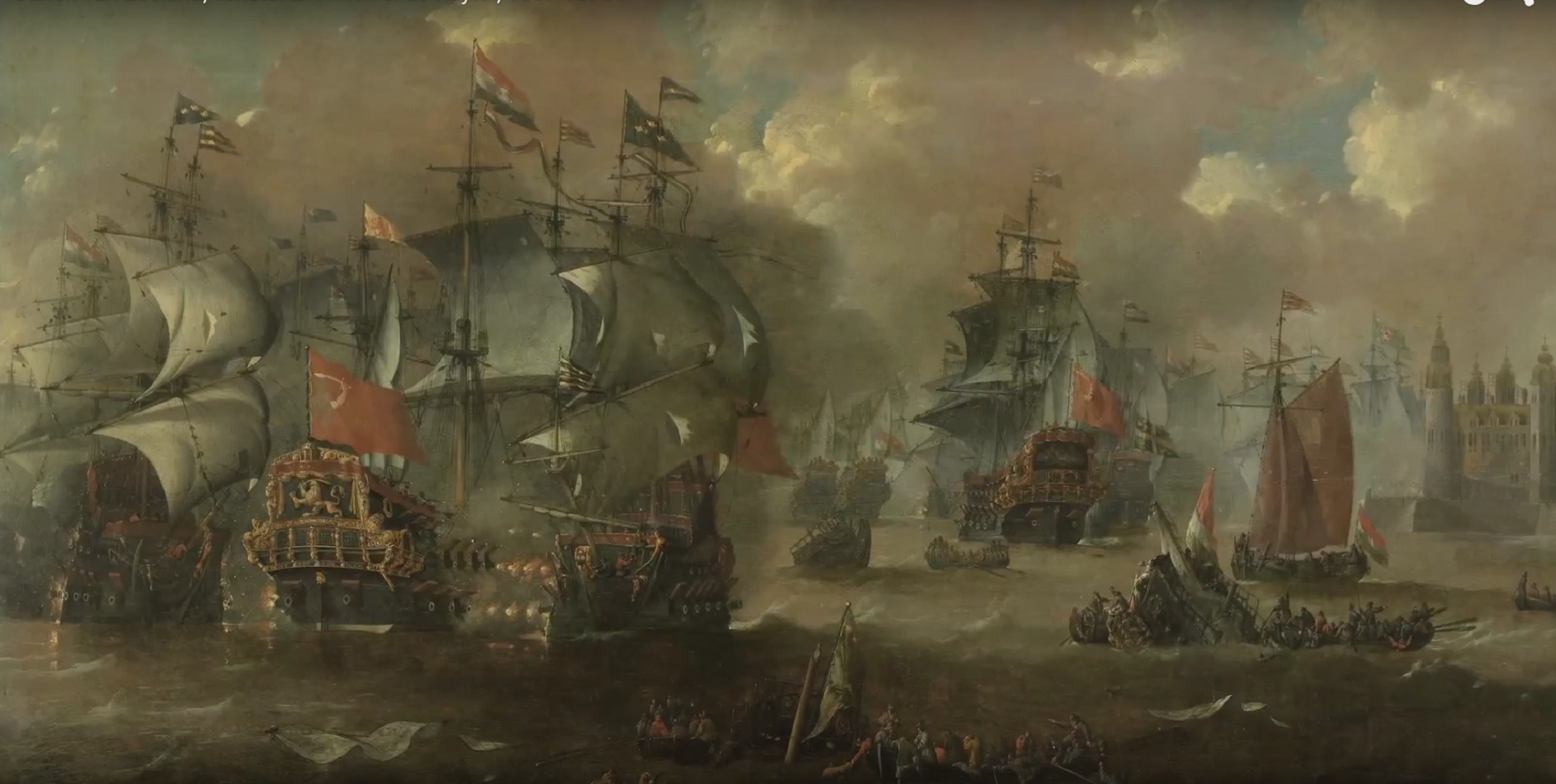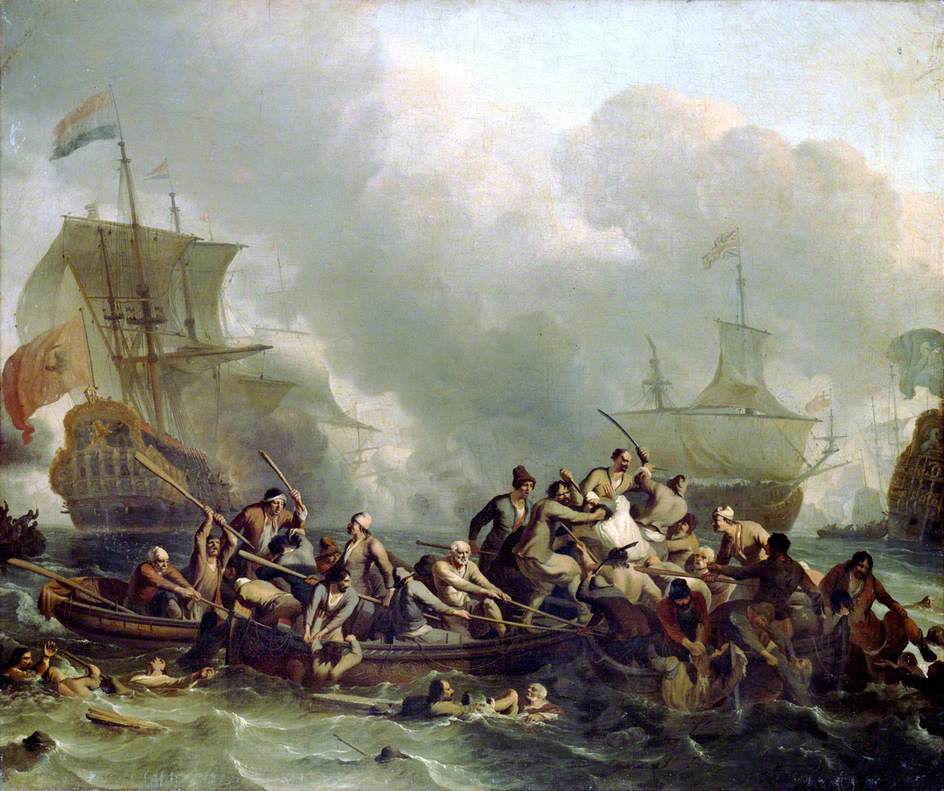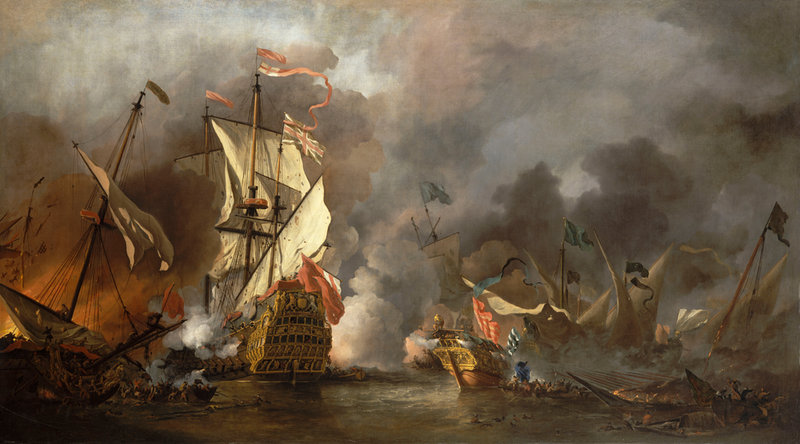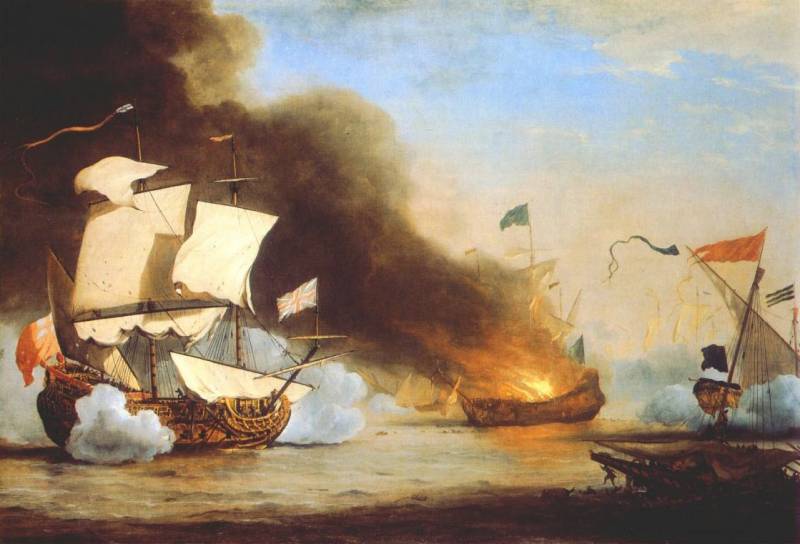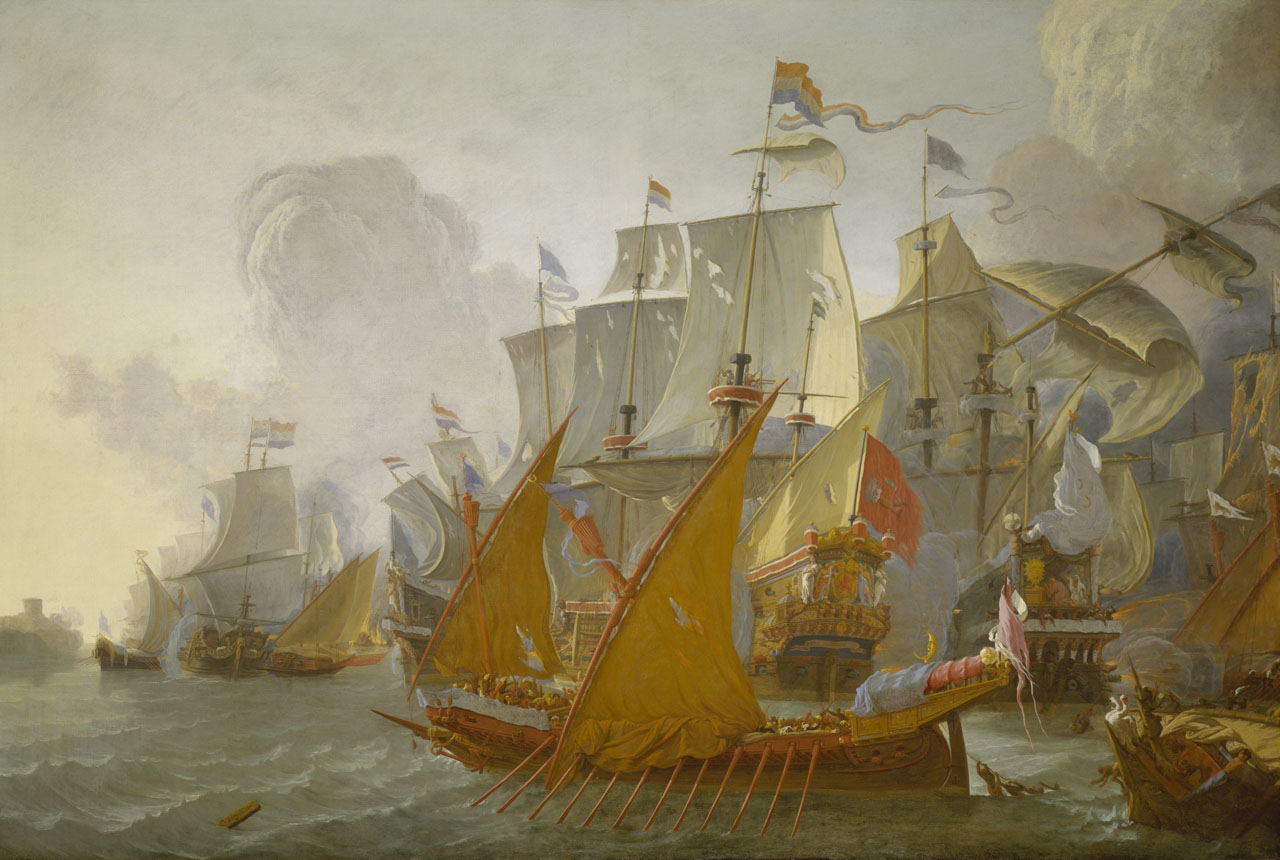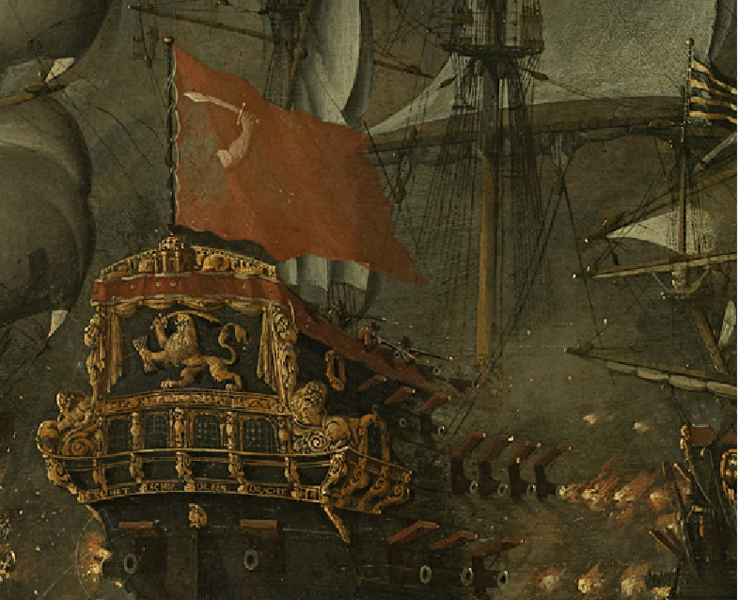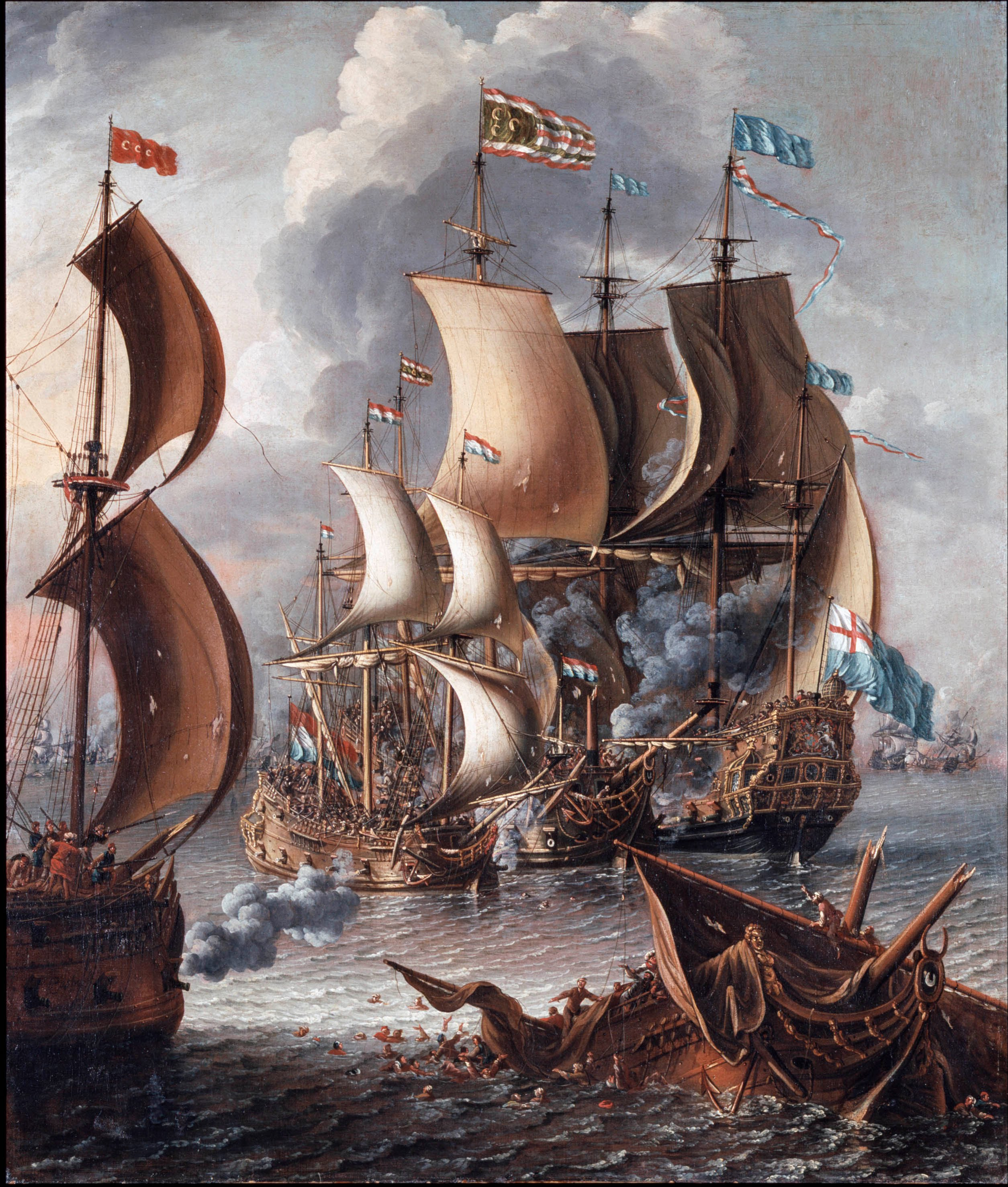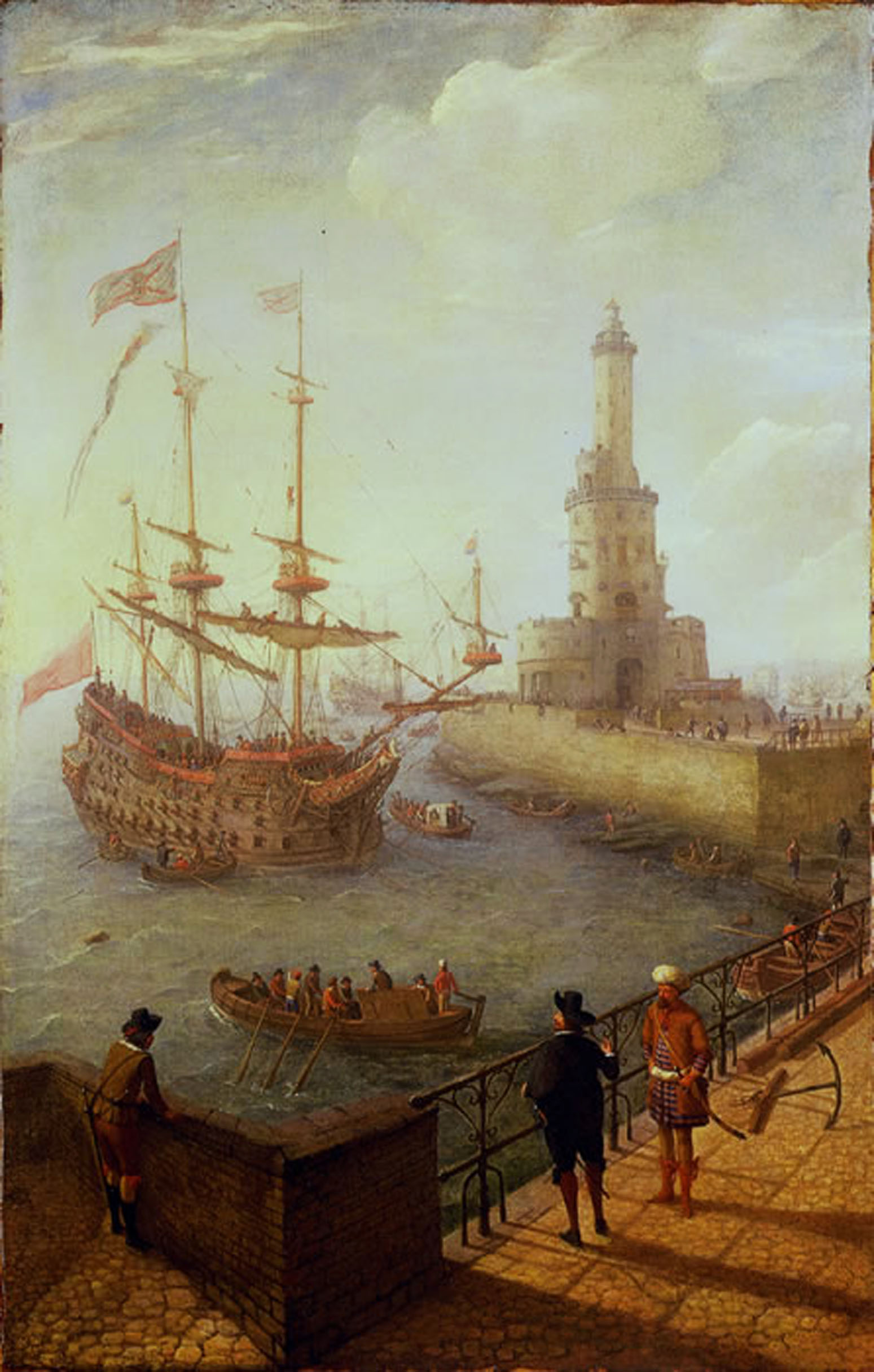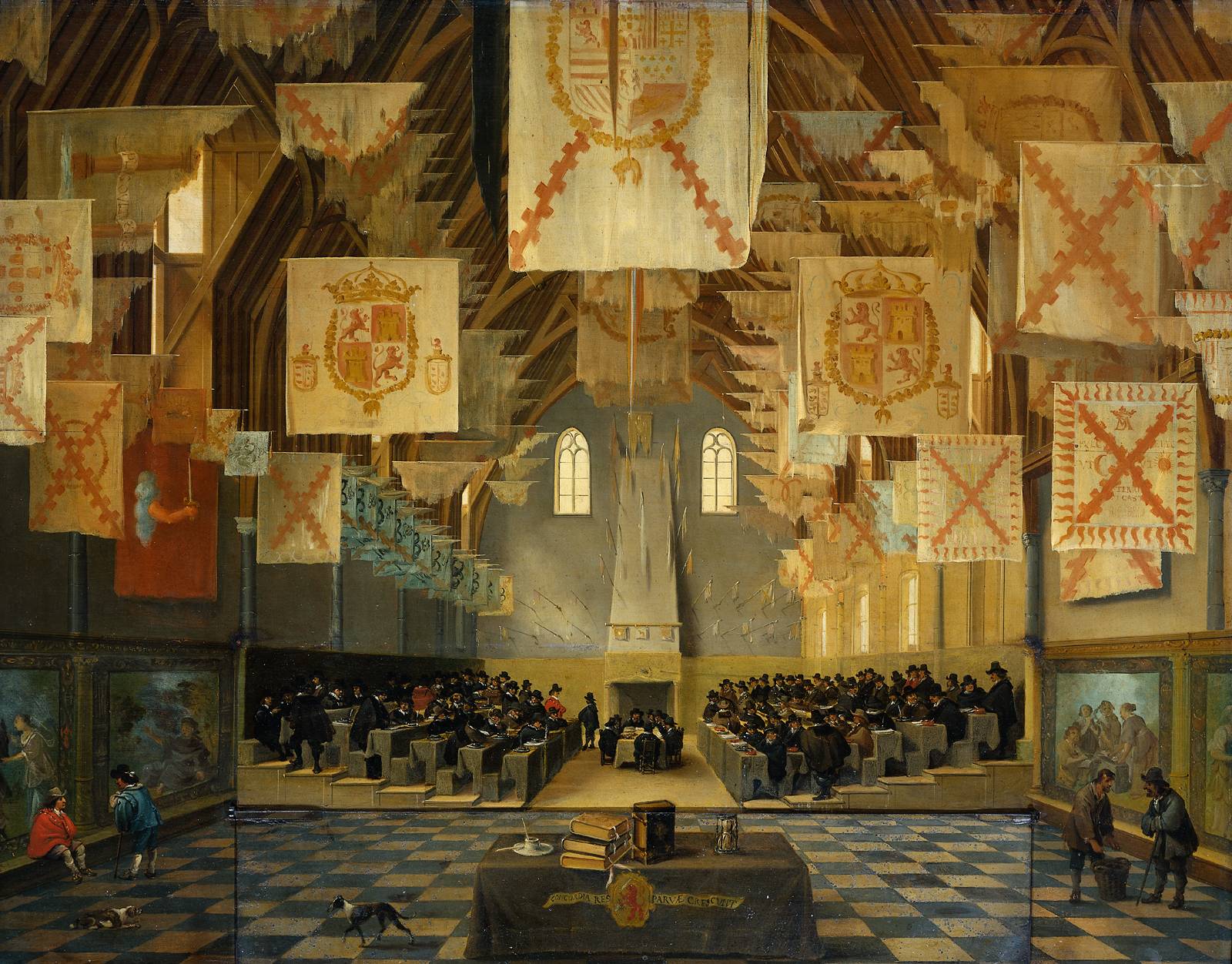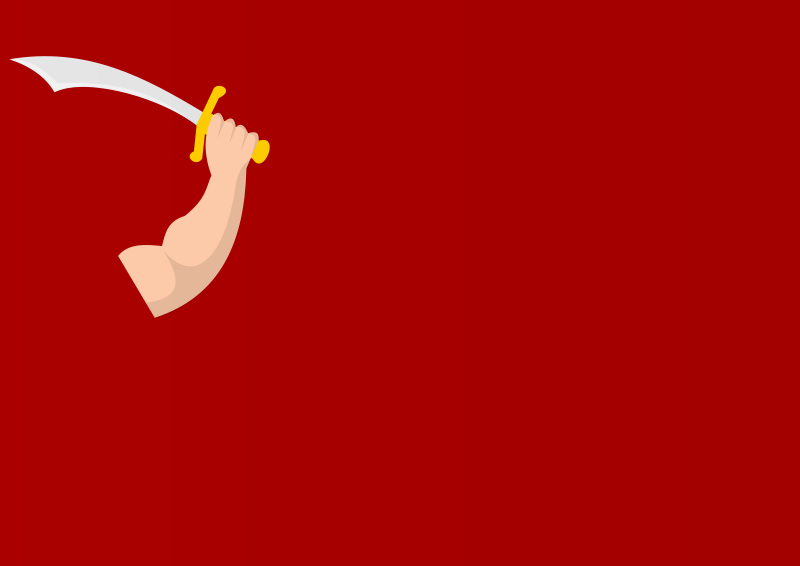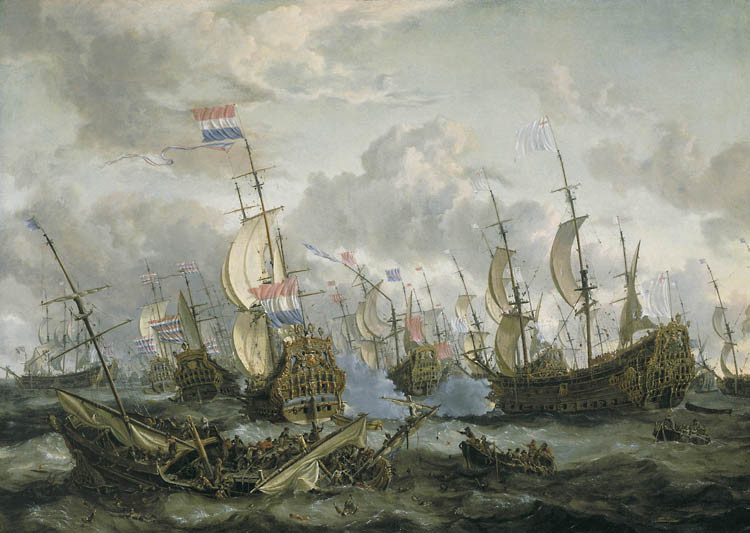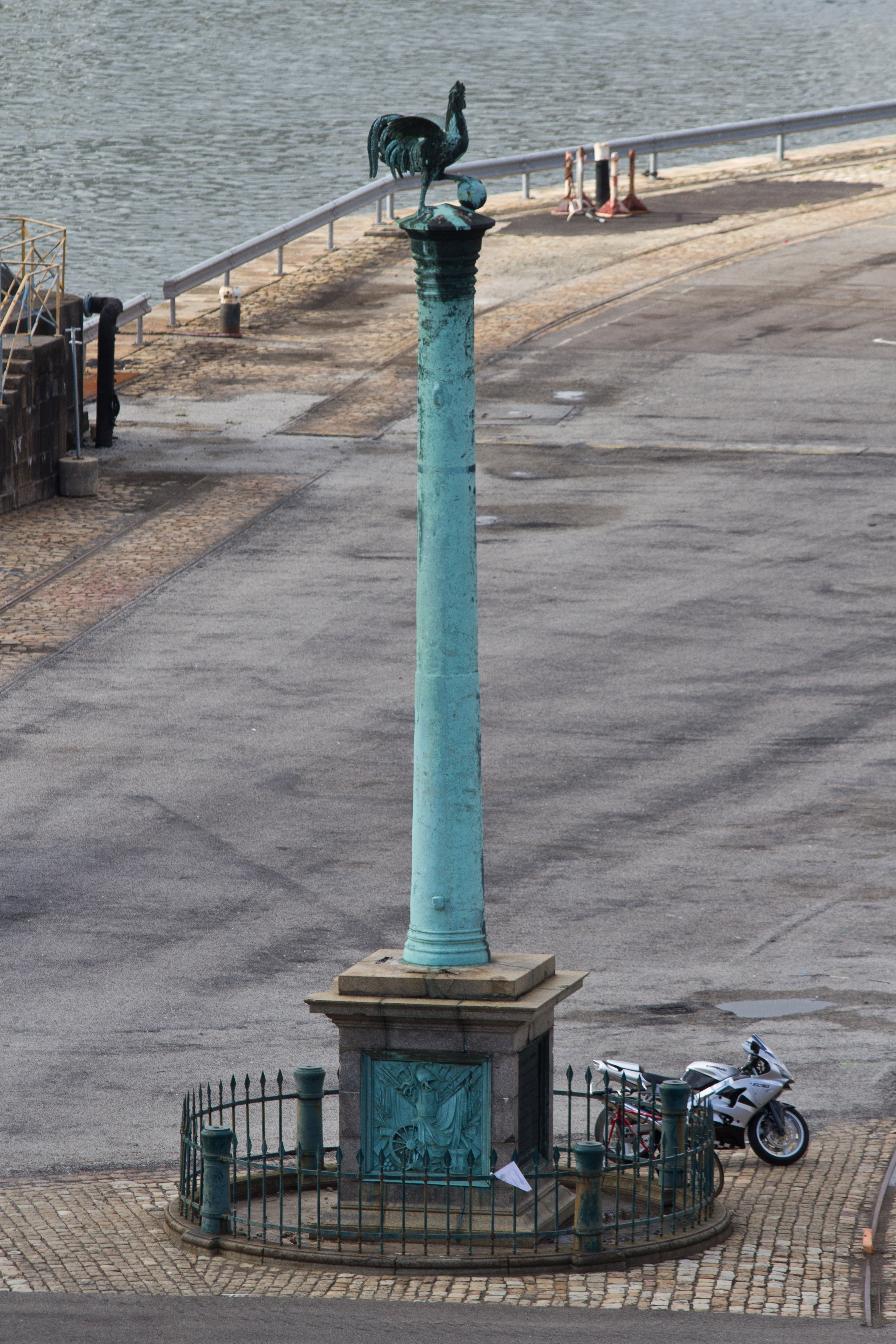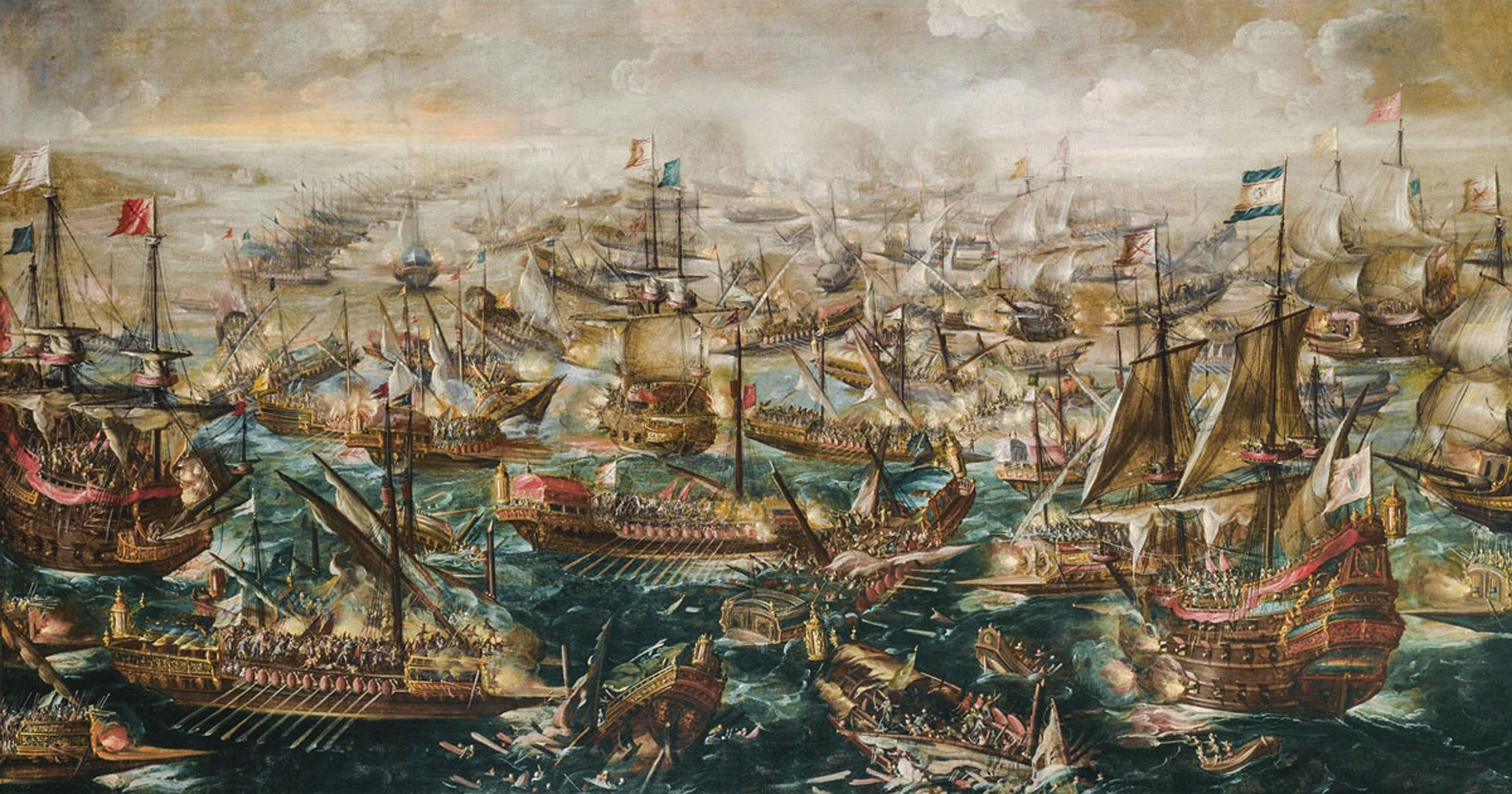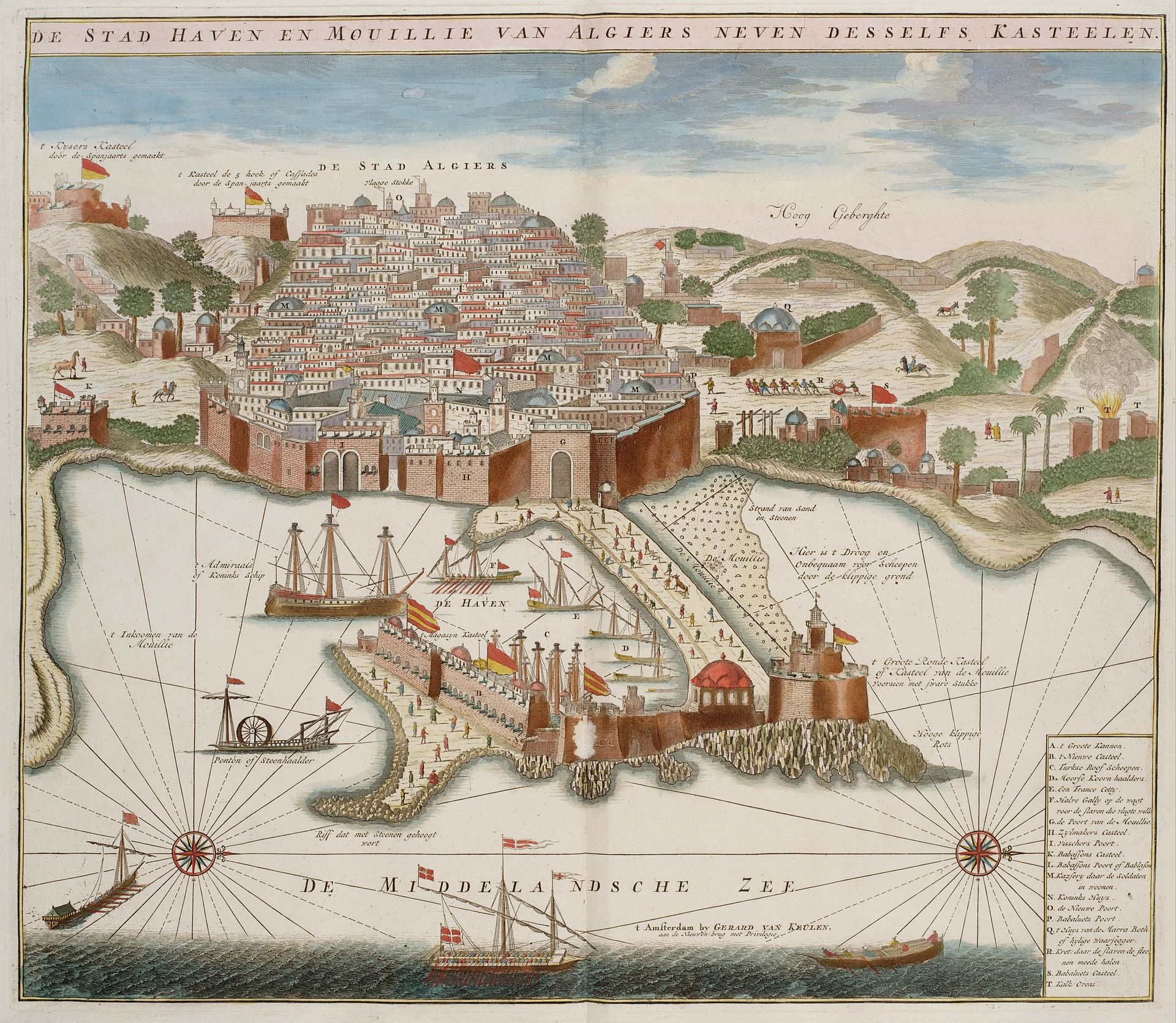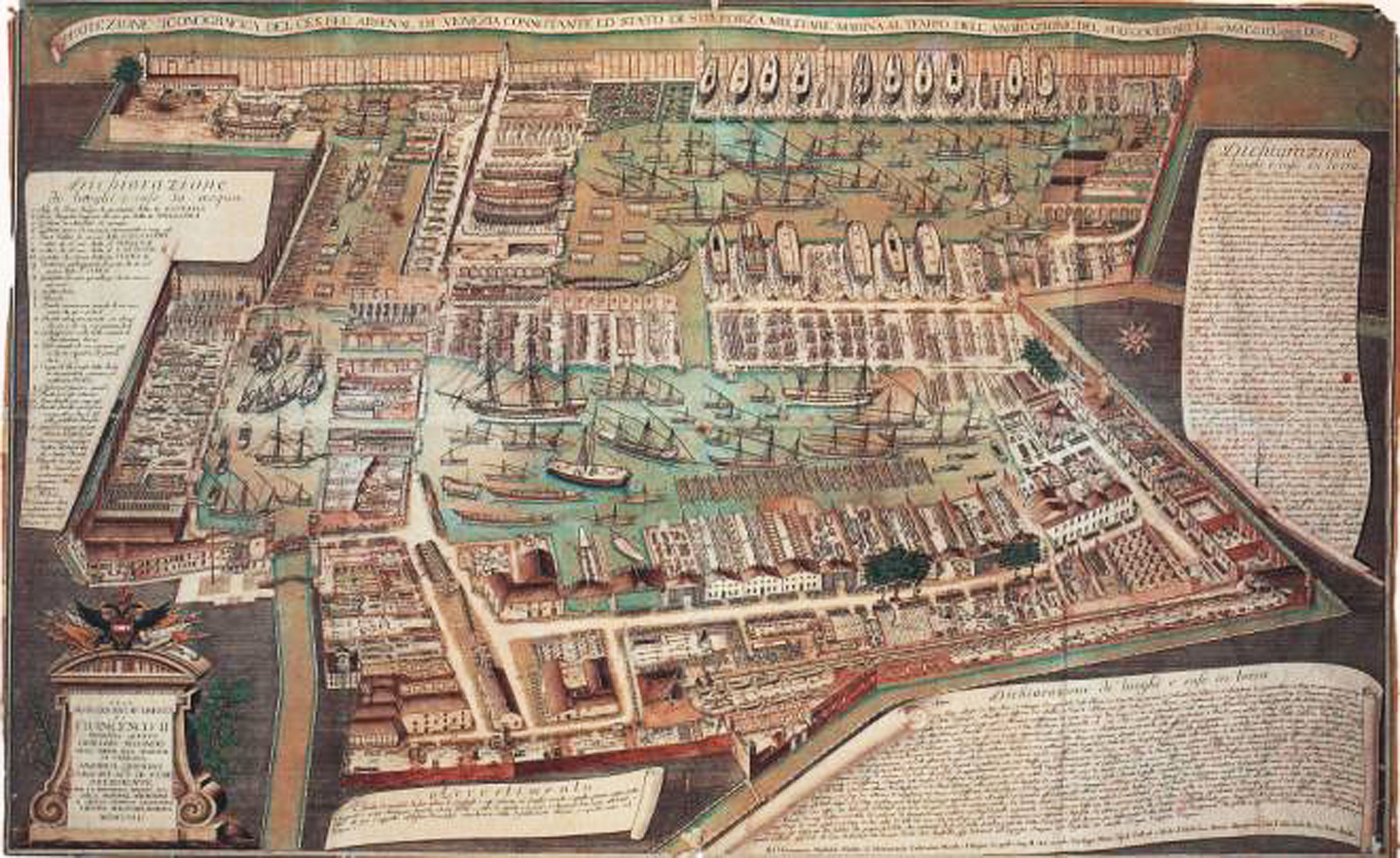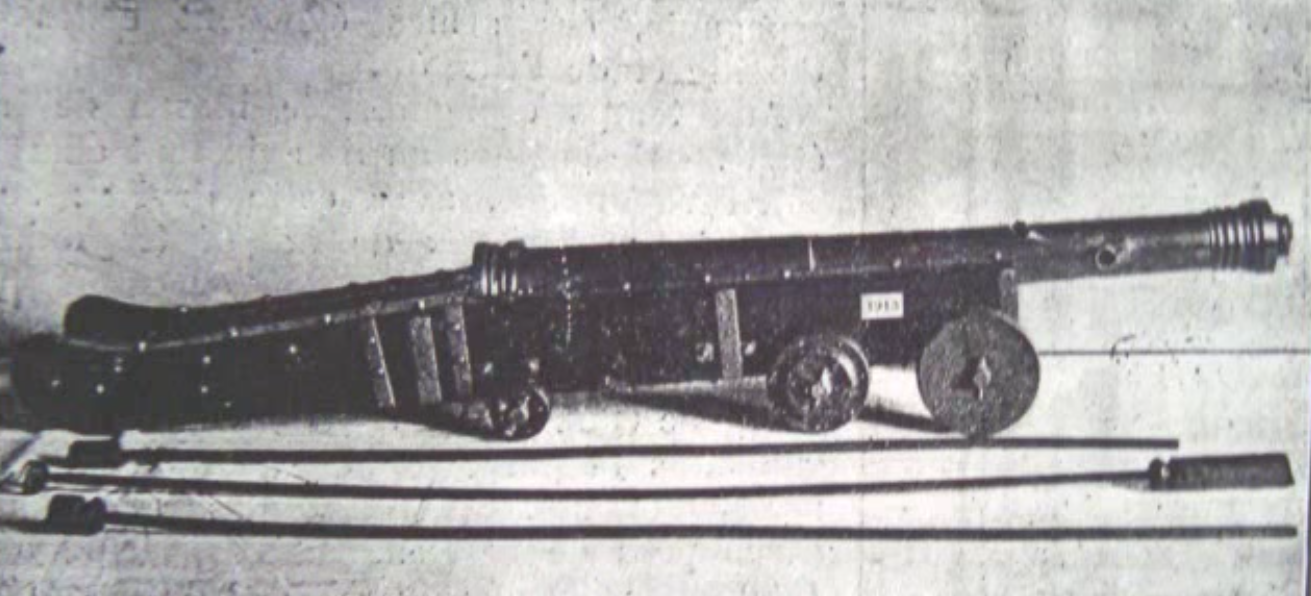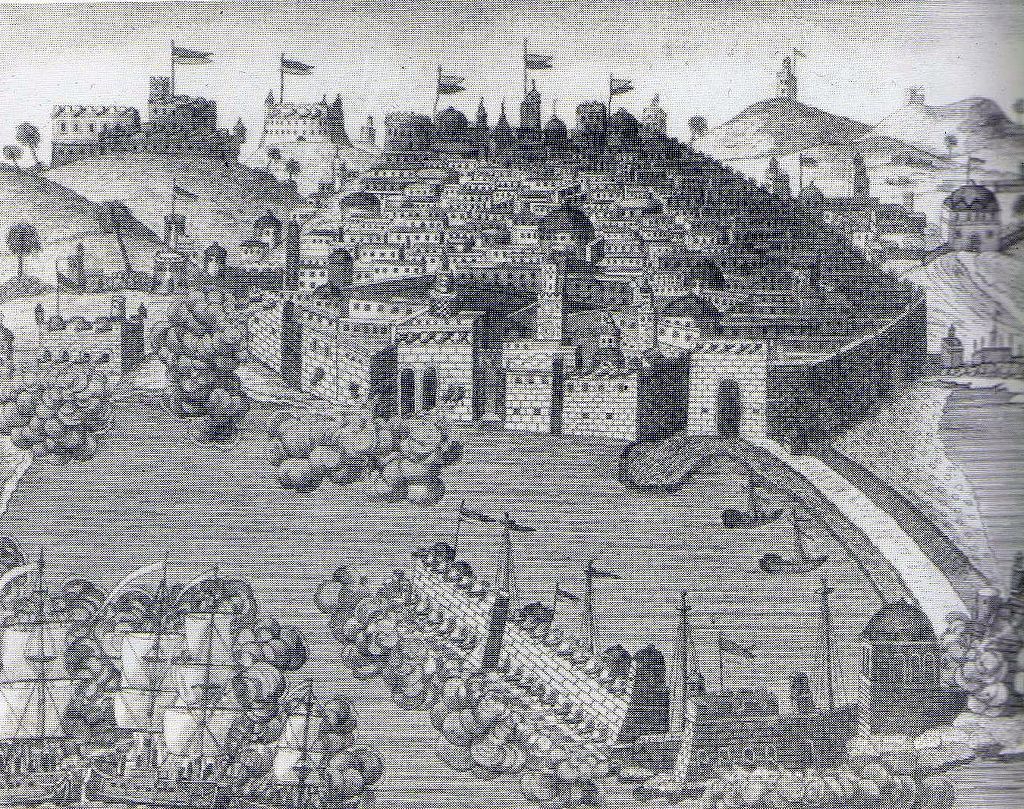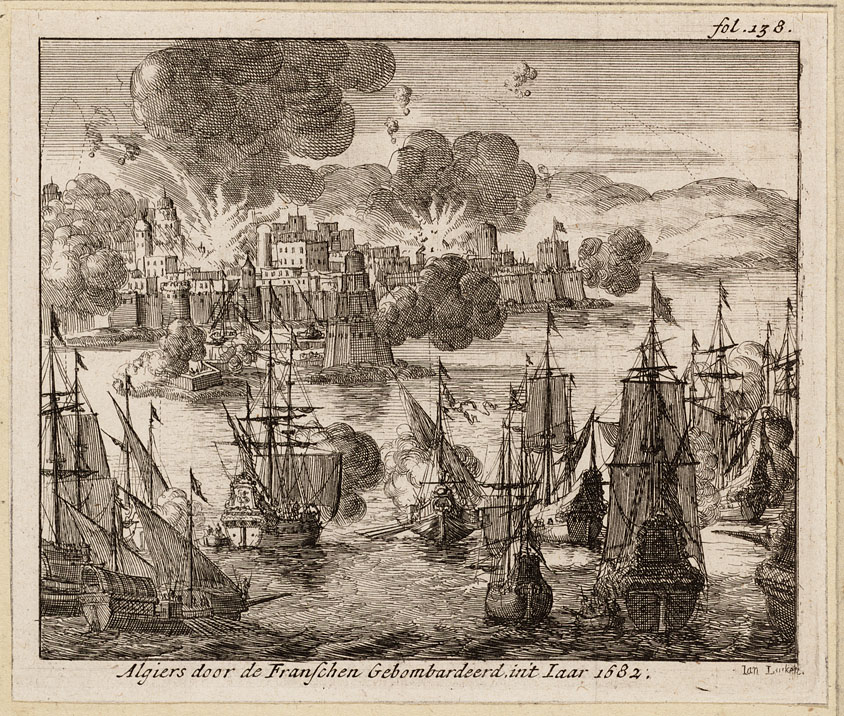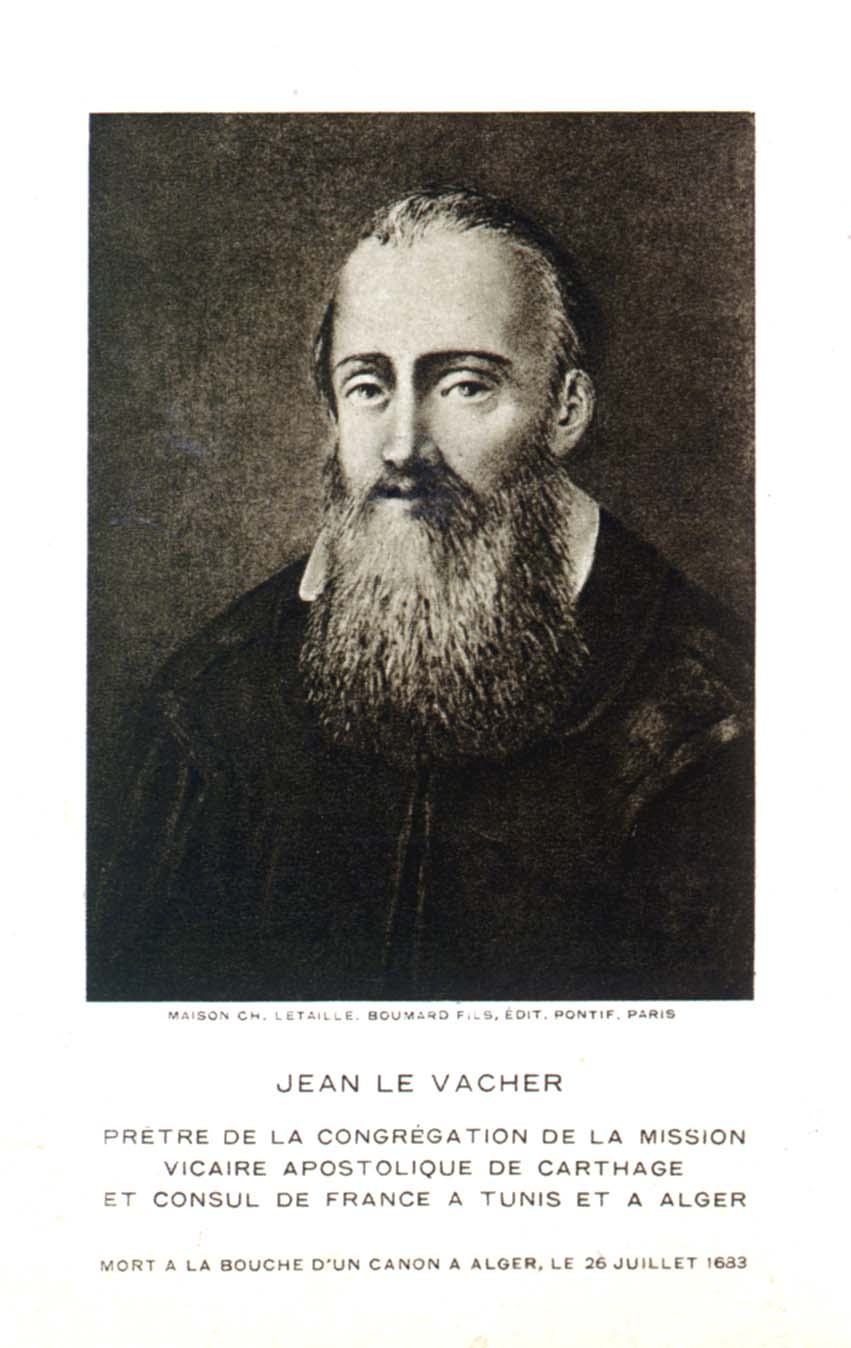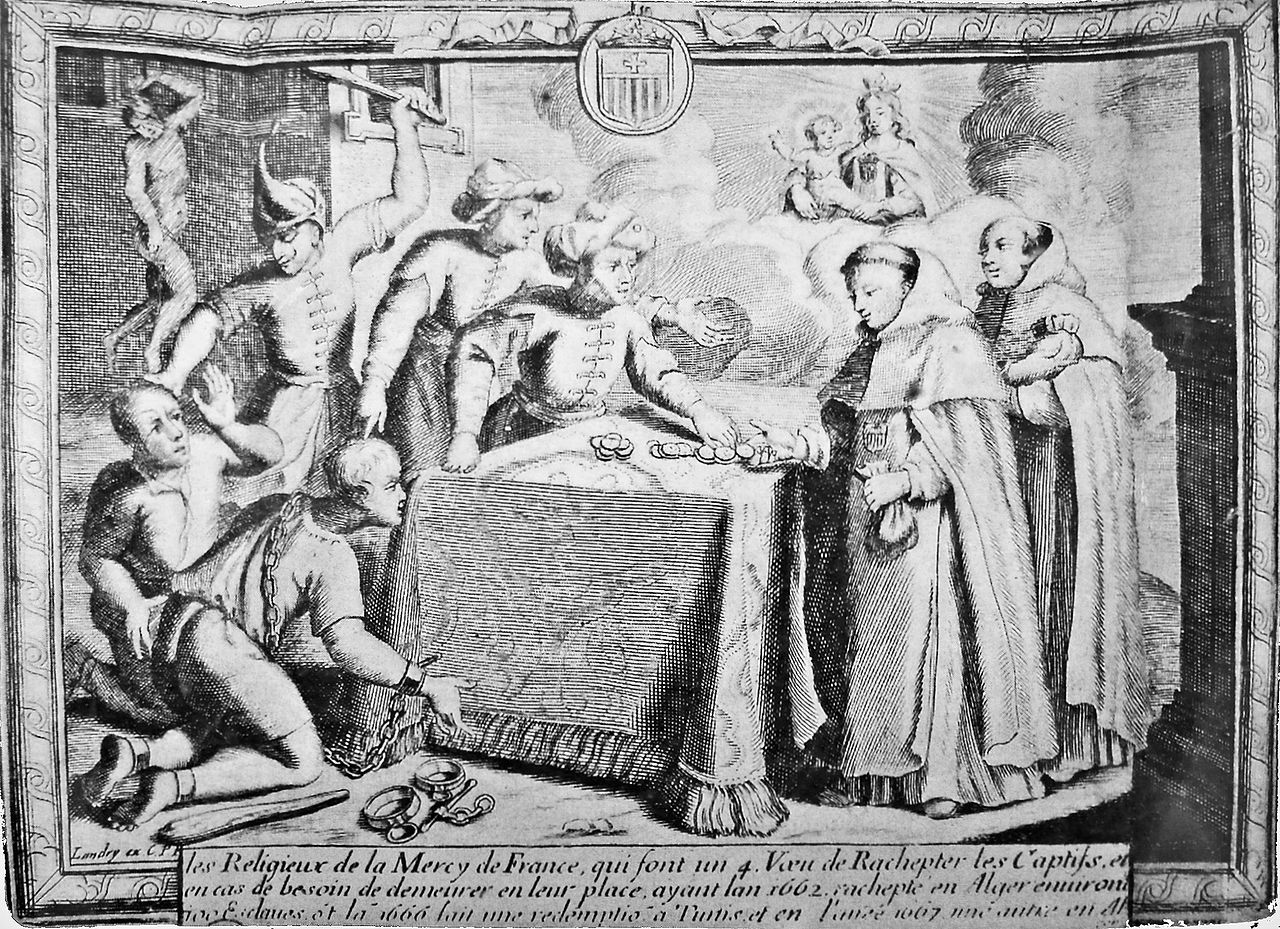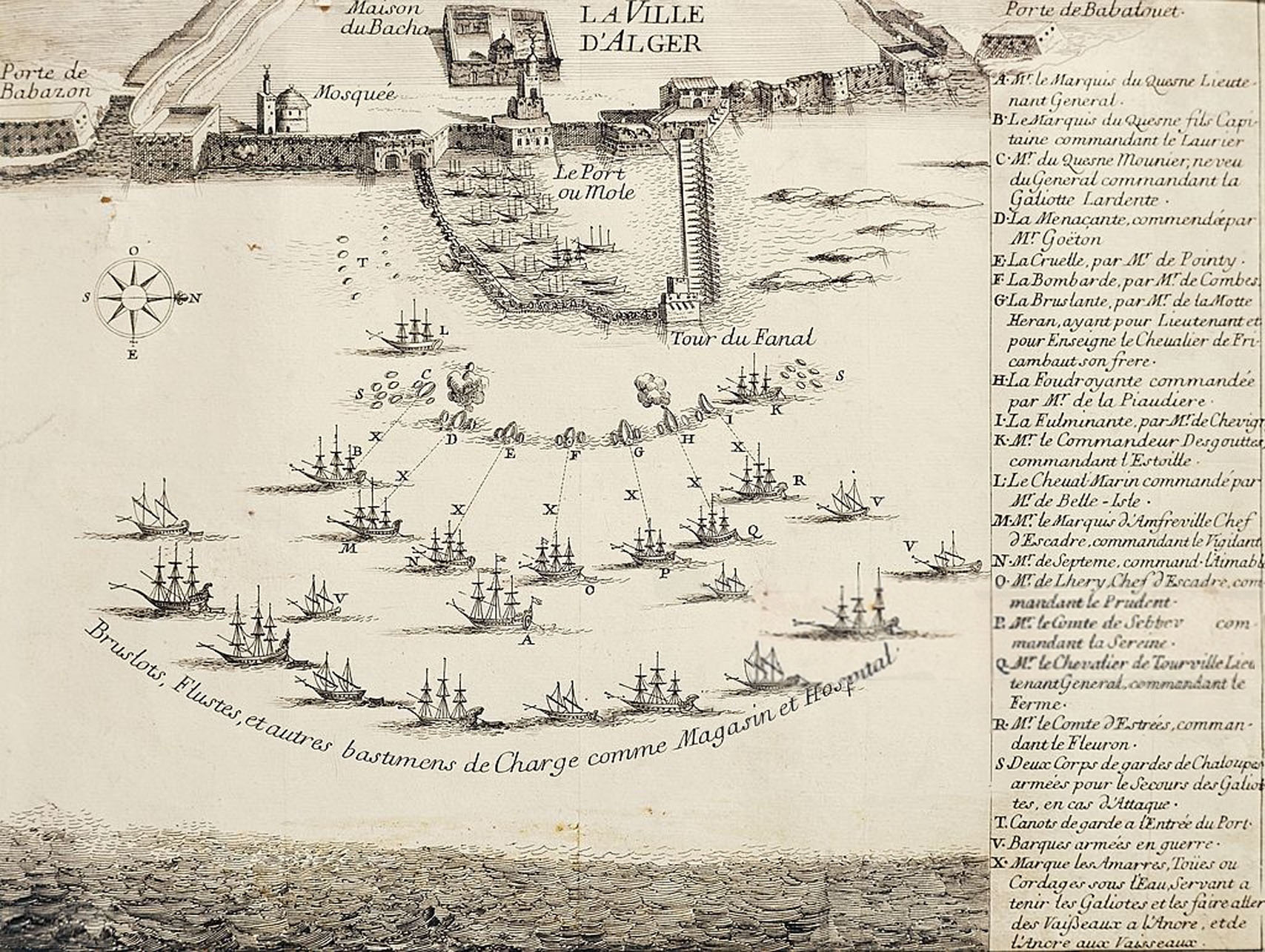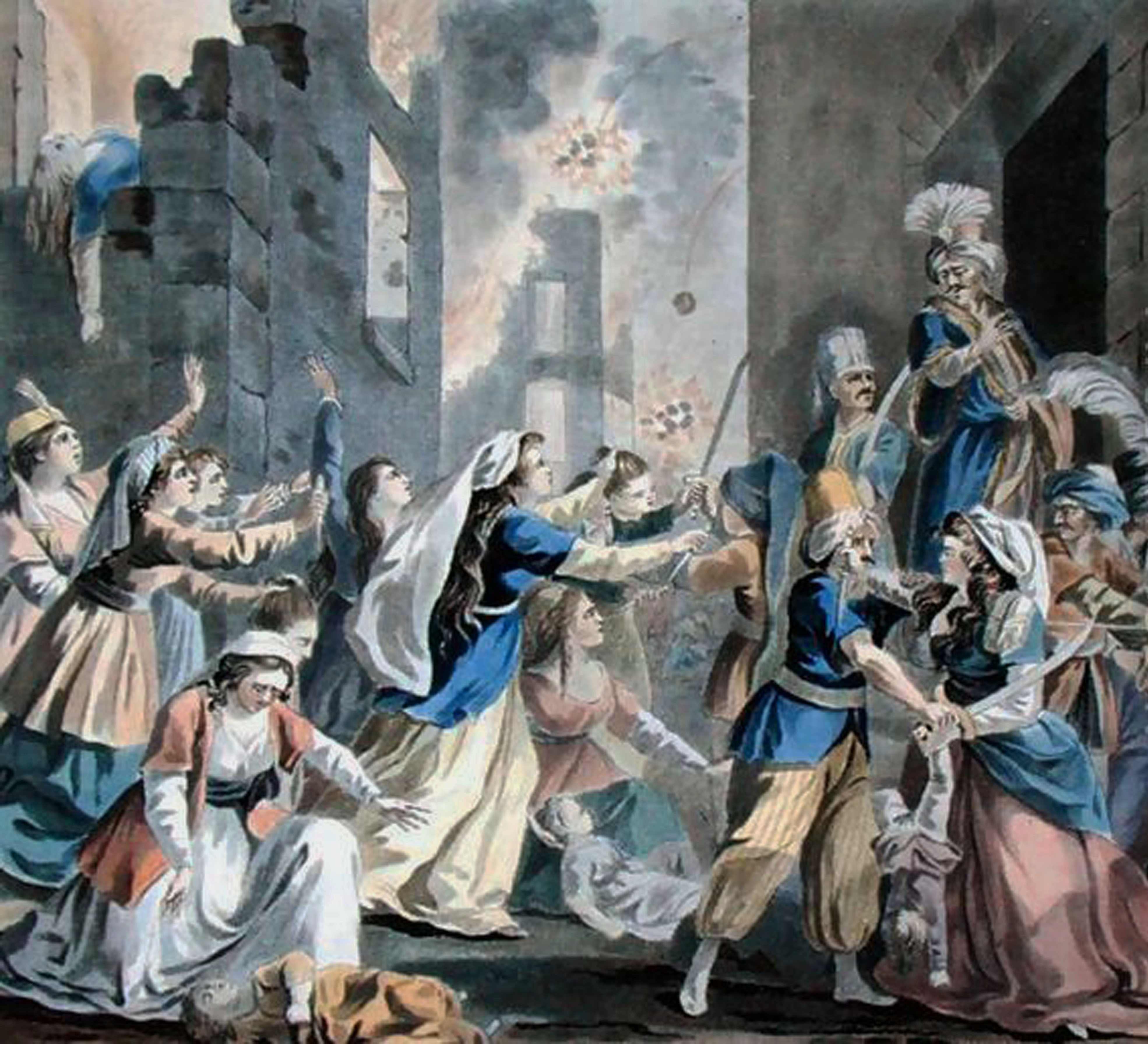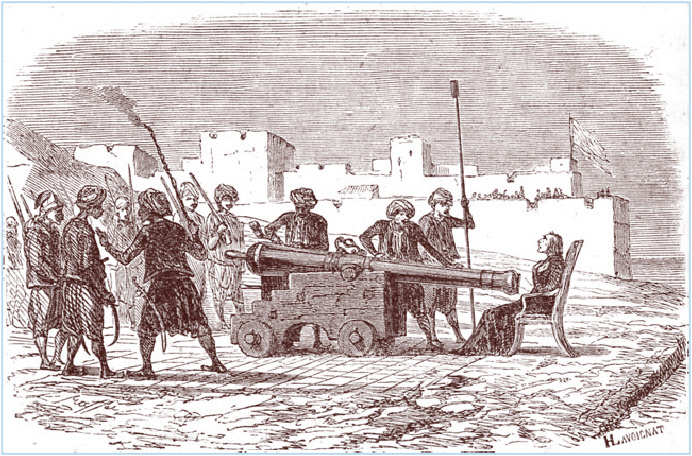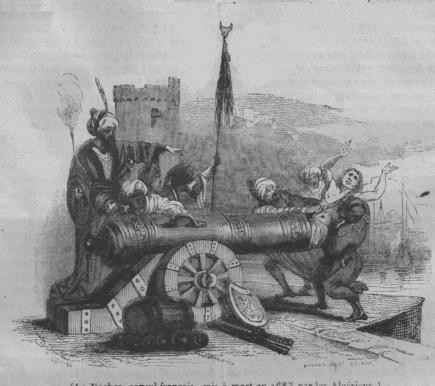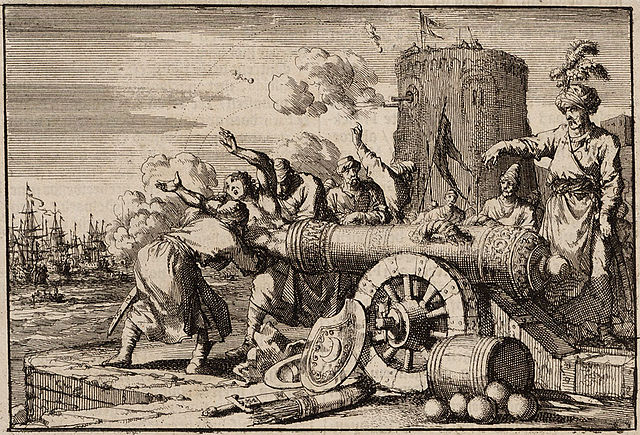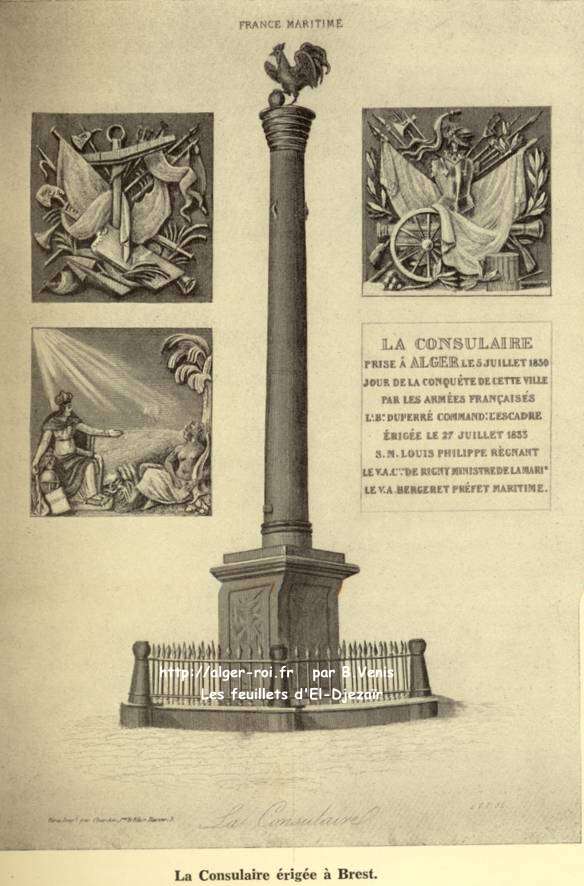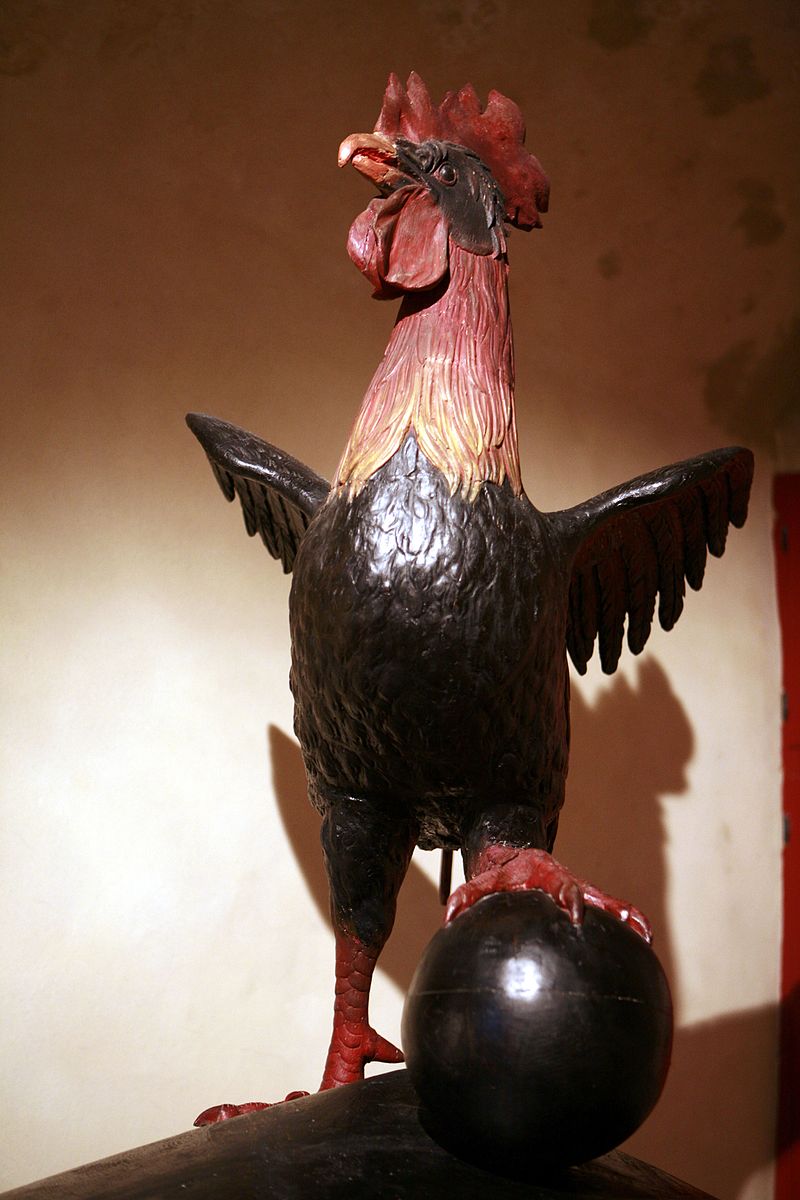Picture of the Week
Pictures of the Week: 29 August 2017: Massive Ship production, Hanged Pirates and Bloedvlags
Hello Everyone! Wow I can’t believe I haven’t posted anything to this topic in a year. Sorry! I will try to do much better.
Today I wanted to share a couple of pictures with you that I find quite interesting in my constant quest for knowledge and research about our favorite time period.
The first painting is fascinating and hits home a point I have made in my comments and writing numerous times over the years. “A picture is worth a thousand words” as they say and I can find no other better way to illustrate my point than with this picture.
If you read my recent posting (Part II of the lecture on the Pirates of Puerto Rico) you can see an event timeline I provided, in which I include most of the significant germane historical occurrences of the Caribbean of that time. The thing that will pop out and smack anyone reading IS – just how totally the Dutch had become a very aggressive and dominant naval power in the Caribbean of the first half of the 17th century. In the next installment of that article I will cover the 1650s to the end of the century and you will see the dominance continues and increases.
So the QUESTION is HOW and WHY was a little country like the Netherlands able to become so powerful and possess SO MANY SHIPS? If you have read some of my other historical articles you already know the answer, but I will give the shortest possible version of that here.
In one sentence – Dutch Banks with huge amounts of venture capital along with early stock market trading/speculation, combined with the earliest example we find in western history of a massive early industrialization, and last, an immense resulting commercial and colonial trading expansion which began first to break the back of Spanish/Portuguese power in the longest war of rebellion in history (80 years), and then later to obtain a global monopoly on trade – is the reason (why and how). Phewww catching breath LOL – I am nothing if not way too verbose.
None of the things in that sentence could happen without the others. It was like the planets had come into alignment. The industrialization caused advancements in technology – thousands of water & wind driven saw-mills and the importation of massive amounts of wood from Germany and the Scandinavian/Baltic countries – a massive arms/cannon production in the first large scale arms factories in history which produced guns both for domestic and export consumption. Venice as I covered in my article about the Most Murderous Monument was the only other country to ever do this before on a much smaller scale and it was not even close to the output the Dutch achieved during their Golden Century.
Massive amounts of Salt and Fish(herring) was required to feed the Netherlands and supply its ships with preserved food for long journeys. The industrialization caused an explosion in the Dutch birth rate and immigration with thousands of Scandinavian and German people flocking there for jobs. The Dutch navy had sailors from dozens of nations making up its ranks.
This painting (by Jan Molenaar from 1682 currently in the Edam Museum) is a demonstration of that prosperity and the massive ship production that no other country in Europe could keep up with. This is only ONE ship builder and not the largest by any means. Each town in the Netherlands was expected to build a certain amount of ships for the Dutch Confederate Navy each year.
Here we see a major shipbuilder for the Dutch town of Edam. The rich industrial leader – one – J.M. Osterlingh, illustrates the 92 ships (of all types and sizes) that his yard alone has put into production in 1682. Osterlingh beams with pride showing off his achievements to his youthful daughter and son-in-law. In addition, the work of art itself preserves for posterity Osterlingh’s impressive annual output.
We know from documents of the time (and the English Lord Clarendon’s own assessments based on his spies) – that the Dutch possessed twenty-five thousand ships globally in 1660 with the English trailing badly with only three thousand. Clarendon and Pepys both urged King Charles to build more ships – when we see this painting – we can see why.
When we look at the numbers of ships in this single painting, we can also see why the Dutch dominated the East and West Indies of this time so dramatically. I am always amused at how all other video games get this dreadfully wrong. The reason I could never get into POTBS is because there was never a playable Dutch faction.
NEXT…
So this next painting is one I thought about saving for later because you will see it again soon in a story I am writing about Capital and Corporal Punishments in the navies and among pirates during the Golden Age. Look for it soon.
This picture goes along with the many others I have included in this section which feeds my obsession concerning the Bloedvlag “Blood Flag” and it adds to the narrative of the European powers combating piracy in the Mediterranean in the 17th century. If you haven’t read my article on a Most Murderous Monument, I suggest you have a look HERE.
In the article on the monument I covered many of the raids on the Barbary cities and states, and here we see an illustration from the 1660s or 70s of a Dutch fleet sitting outside of Algiers boldly showing off to its inhabitants all of the pirates it has caught and has hung upon the yard arms. Notice the Bloedvlag prominently displayed on the ship in the foreground(both on the Tafferrel and the main-mast) and Dutch tri-colors on the other masts. I am certain this was very likely a fairly regular occurrence during this era.
I love illustrations that so dramatically demonstrate and represent historical routines which I read about so often. So awesome!
MK
Pictures of the Week: 09 August 2016 Bloedvlags and Spanish Privateers
So last installment we looked at a Spanish Ship sinking during the Battle of the Downs by small Dutch warships and this month we’ve got a similar illustration with Tromp’s Aemilia taking the large Spanish almirante galleon commanded by the Spanish Admiral Oquendo. Even though its a black and white lithograph the Bloedvlag can still be clearly made out on the tafferel of the Aemilia. This one is with the arm coming out of the clouds.
Next we have another modern illustration by my favorite maritime artist currently living Arnold de Lange. Here we see another rendition of Tromp’s Aemilia going after a Spanish ship. There on the tafferel is again displayed very prominently – the Bloedvlag!
And now a painting by one of the Van de Veldes that is not known as well as the others – Cornelis Van de Velde…not to be confused with the Dutch privateer Cornelis Van de Velde who preyed on Caribbean shipping in the 1650s. This painting is a rare treat. It is a painting commission by James II during his short reign before William of Orange invaded England to take the throne. It depicts a very real battle in which an English East Indiaman successfully beat off three pesky Spanish/Flemish privateers out of Ostend. Not only did the ship cripple the two in the background causing them to retreat, but it actually captured the one in the foreground that you can see is striking her colors. This goes to show why East and West Indiamen of the time were heavily armed and manned. What a great painting! Love the detail in the English Indiaman but even more love the rare glimpse into what a Spanish Ostend privateer looked like in the 1680s. Very cool! Wish I could find a few more like this one. MK
Pictures of the Week: 09 June 2016 (Yet more Bloedvlags! and the oldest flag in America)
So the last few months I have managed to find yet more interesting paintings/pictures of bloedvlags. In this installment we see no pirates involved at all. In fact these paintings clearly illustrate Dutch squadrons boldly flying the Bloedvlag while engaged with Spaniards during the 80 years War in one case and in the First Anglo-Dutch War in the second case showing Admiral Tromp’s beloved Aemilia replete with Blood flag going into action against the English. Only the Dutch galleon circa 1615-1640, sailing past some fortifications in the distance (probably in the Med) could be out pirate hunting. These are just quite simply some awesome pictures.
Last here is an interesting replica of the oldest known flag in North America – known as the Bedford flag. Read about its history HERE It is fascinating that the flag was carried by cavalry as early as 1704. Wonder what European event or experience might have influenced its original creator? Had someone been sailing with a particular nation’s navy or privateers during or prior to the War of Spanish Succession? Makes you wonder. I was both surprised and baffled to find this totally cool flag where I did. The Bloedvlag influence is undeniable. Here’s a pic of one you can buy online. The link above shows the original: MK
Pictures of the Day: 11 October 2015 (More Barbary Pirates and Bloedvlags!)
So I have found several more really interesting ship paintings clearly showing the Bloedvlag. So lets look at them and discuss!
In the first picture we see an action taking place right off a coastal town. This fight is clearly between the French and the Dutch and pirates are not in the fight. Yet here we see the Bloedvlag displayed prominently. I do not know what battle this is but it does not appear to be in the Mediterranean.
In the second picture we see fighting going on between Englishmen and Dutchmen in the boats of the foreground. I had initially thought that maybe aid or rescue were occurring, but clearly not. Being that this is a Backhuysen depiction of the Battle of the Texel in the 3rd Anglo-Dutch War we know this is in the channel. So once again – no pirates and we can clearly make out English and Dutch navy ships battling it out. This was another great DeRuyter victory. There to the left is a Dutch ship flying the Bloedvlag.
I clearly have more research to conduct on the subject. If use of that flag wasn’t just confined to fighting Dunkirkers and Barbary pirates – and included fighting opposing nations war fleets, what was the protocol? Could this flag have been flown in the Caribbean? We know pirates adopted the flag. Could they have seen it there already? Could it be they procured their first flags from the Dutch or from the taking of Dutch military prizes? Several notable pirates took Dutch warships and made them their flagships. Could Condent’s Flying Dragon already had a Bloedvlag aboard? What about Edward England’s Fancy. Interesting to think about eh??? MK
Pictures of the Day: 28 January 2015 (More Barbary Pirates and Bloedvlags!)
So today I am featuring more than just one picture. In staying on the topic of my current study of European actions against the Barbary Corsairs during the Golden Age and their use of the Bloedvlag, I bring you four(yes that’s right count em “4” paintings by Van de Velde the Younger of Barbary Pirates.
In the first two paintings notice the patrolling Restoration Era English 3rd rates (possibly a 2nd rate in the first picture) single-handedly dealing with bunches of the nasty Barbary minions. Notice the English Ensign shot through the transom pole and drooping in the first picture. I actually own an AA Orlinsky recreation of this painting in my private collection.
In the third picture we are treated to a Dutch punitive expedition bombarding Tripoli in 1670. The pirates have come out to meet the Dutch in full force. I love this picture. Notce the large Barbary warship done more in a Spanish style with a sun and a kneeling figure on the stern. As I said in the previous post, the Barbary Corsairs built and manned their own large warships and here we see another example. Also notice on the prevalent Dutch Warship the Bloedvlag flying from the tafferel. This one is much like the captured Spanish or Dunkirk version hanging in the Binnenhof in my first picture post – showing the arm with the sword coming out from a cloud.
In the final close-up picture we see a Dutch warship engaging Barbary Pirates with the typical Dutch version of the Bloedvlag flying from the tafferel. Wouldn’t it have been amazing to be there! If I can get the funding next year, I will take anyone who wants go into these pictures on that kind of adventure with my own splendid historical video game.
MK
Picture of the Day: 15 January 2015 (A Sea Battle with Barbary Corsairs)
So here we see a painting by the noted Flemish painter Laureys a Castro (1664-1700). This painting is part of the Dulwich Collection in the UK. It was probably painted sometime in the 1680s. If I had to guess I would say that it is a post Third Anglo-Dutch War (1672-74) and pre-William and Mary era(1688-1704)painting based on the styles of the ships depicted alone. These are left-overs from the 1660s-70s and the painting likely depicts an action fought around 1680. We see a fierce battle between a combined Anglo-Dutch fleet against large Barbary Corsair warships.
I love this painting because of the wonderful action frozen in time and the almost cartoon-like composition of Castro. For many Americans, they know about the Barbary Corsairs only from the little bit of history they’ve learned about the battles fought against Tripoli and Algiers by the fledgling US Navy only decades after we we started out as a nation. Most westerners know the US Marine Anthem with the phrase “From the Halls of Montezuma to the Shores of Tripoli”. However, most people aren’t aware that the Barbary Pirates were a centuries old threat that had harassed and raided European shipping and ports for centuries. I have an excellent book about slavery I plan to review in the near future that covers the centuries of slavery of White Slaves brought back to Northern Africa as captives of the Barbary Corsairs. If you read my story on Piet Heyn you will observe the short episode where he has to take on supplies at one of these North African ports and negotiates the release of Christian slaves from the Sultan. This is a true story – it really happened.
The Barbary Corsairs were a fearsome opponent that were constantly dealt with by seafaring nations. The Spanish, French, Dutch and English kept navy forces and patrols constantly in the Mediterranean to protect their convoys and shipping from the 16th century onwards – almost to modern times. These “pirates” far from being the lightly armed and meagerly equipped opponents they are often depicted and stereotyped as, were often just as well armed and equipped as their European counterparts. They not only built their own warships in the European style (not just galleys and xebecs, but full blown manowar), but they often used European tactics as well. Dig a little and you can find stories of European defectors that became powerful Barbary warlords.
The primary action shows an English Third or Fourth rater engaging a large Barbary Manowar. On the opposite side a smaller Dutch OorlogsFrigat (war pinnace) fiercely engages the same ship. Notice the colorful Barbary flags with multi-colored stripes and crescent moons. Colors and symbols we see even now in the flags of the North African nations of modern times. To the left foreground we see a damaged Barbary frigate with its bowsprit shot off trying to get into the action.
What an awesome painting. These types of actions were commonplace and you can find them in spades in the surviving logs and accounts of the times as well as the art of the period we see right before us. Many of the ships that engaged these pirates flew the Bloedvlag and I will be showing more paintings in the near future as part of my research of the Bloedvlag and my upcoming historical article on the subject. Stay tuned!
MK
Picture of the Day: 09 January 2015 (Spanish Warship in Naples)
This grand painting by the Dutch master Abraham Willearts gives a brief glimpse into a bustling port in the Golden Age. The ship has just come to rest anchored next to a great lighthouse in Naples, Italy in the late 1660’s. Naples at this time was a powerful city which dominated Italy. It was a very important Spanish possession until the end of the War of Spanish Succession in 1714. In 1668 when this scene probably took place during Willaert’s visit to Naples a year before his death, Naples was the second largest city in Europe with around 300,000 inhabitants. Only Paris was larger. Naples was the largest port and city in the Mediterranean and ships from all over Europe, the Med, and the Levant called here to off-load and exchange rich cargoes.
Looking at this impressive Spanish Manowar in the foreground, one wonders if she has been sent with, troops, official correspondence, important passengers from Spain or if she is just coming in after a patrol to keep the shipping lanes safe from all manner of pirates (especially Turkish and Barbary corsairs).
This large galleon tells us a lot about Spanish warships of this time. Along with the typical ornate stern decoration on large galleons of this era we see a large figure head as well of a prince riding upon a leaping white horse. Her armament is impressive and she boast three full gun-decks and one or two split gun-decks above on either side of her waist. By her size she very likely mounts bronze 50pounders on her lower deck cast in the great foundries of Liege. These were the largest marine guns of the time. Only the large bombards found on War Carracks prevalent in the previous century were larger.
Her flags also tell us a great deal. She flies the Royal Spanish flag with arms and the Cross of Burgundy behind from the mainmast. Below this flag flies (probably) a Catholic religious pennant. She sports a solid red flag from the stern which means that she has just come from battle, she is the flagship of a squadron or fleet, OR, she has a Spanish Admiral or Royal aboard. A simpler common Spanish naval flag with the Burgundian cross flies from the foremast, and a small naval jack from the sprit topmast as well.
From NMMC “There is considerable activity both on the ship and in the rigging as they secure the ship and make ready to go ashore. One figure is climbing the foremast. The artist has paid particular attention to lively details. Small craft are shown in the surrounding water. The barge rowing towards the left, in the foreground, has three sets of oars. As well as what appear to be hinged deck sections over a small cargo space in the stern. The deck sections are raised and three men, including the helmsman, are standing or sitting within the small cargo space. In the distance, to the right, a small ceremonial barge with a canopy in the stern is going past the anchored ship. Another ship at anchor, probably flying the Dutch flag, can be seen in the distance. The bay is full of activity and shipping. Figures are standing on the balconies and terraces of the lighthouse. While others line up on the quay beside it. Figures can, also, be seen standing with fishing rods on the rocks. At the landing steps below the quay, in the bottom right corner, men with oars are standing in a second barge. The mooring lines of the ship at anchor are clearly visible on the steps. In contrast with this busy scene are the three larger figures, in the foreground, which cast long shadows on the cobblestones. Two are shown wearing swords and in European dress…”
What an awesome painting. I just wish I go into it and see the great Golden Age for myself. Reading awesome books on the subject, looking at wonderful paintings, and playing super historically immersive video games set in this time are the only ways we have of doing this unfortunately. This image can be found as a transition/loading screen in GOF ERAs2. Many of the Spanish cities of the Caribbean were large cosmopolitan cities with huge forts and imposing lighthouses at the same time as this was painted. In fact the painter Willearts has spent a couple years in Brazil which had been a Dutch possession from 1630-1661. In fact Piet Heyn took San Salvadore during the Dutch conquest. Many of Willearts’ paintings illustrate the bustling and well developed colonies. These were not rural backwaters as so often depicted in movies, media and games. Many Spanish colonial cities boasted impressive Cathedrals and even Opera Houses during the Golden Age.
The original of this painting is in the Ingram Collection and Prints of this painting can be found in the British National Maritime Museum Collection Archive in Greenwich, UK.
National Maritime Museum Collections
MK
Picture of the Day: 05 January 2015 (The Binnenhof)
Some of you might recognize this image from the intro video in the GOF Historical Eras Module2. Today’s painting is of the Binnenhof, painted by Bartholomeus van Bassen in 1651. Looking at the painting one might well assume that Spaniards are in the great hall or that it is located in Spain. However these numerous hanging Spanish flags are the captured trophies of the Dutch military, taken from Spanish regiments and ships both on land and sea over 80 years of bloody conflict with Spain in the war for Dutch independence – which had only ended some three years before this painting was finished. Looking at the flags some are aged and burned and decades old – and others almost perfect.
Indeed these spoils of war are an excellent historical record of Spanish banners from this time. Notice the many embattled Crosses of Burgundy. Also notice the Pillars of Hercules – symbol of the Spanish Crown with the motto PLVS VLTRA below. The most interesting one in my opinion is the Spanish version of the Bloedvlag (Bloodflag). This is the red flag with an extended arm with sword. This version has the arm coming out of a cloud which reflects it is a divine arm. This flag probably came from a Spanish or Dunkirk privateer. Indeed our own logo here at Buccaneer’s Reef is a version of the Bloedvlag. This type of flag was used at sea to let people know that the ship was sponsored and on a mission – a mission to hunt for pirates or counter privateer against the other side’s privateers (Sea Beggars in this case). These ships would be fast, well armed, and well manned.
Dutch squadrons hunting Dunkirkers or Barbary Pirates would all carry large Bloedvlags from their taffrail. The Dutch version usually carried the arm and scimitar quartered towards the upper left. Later this symbol of legitimate pirate hunting and counter privateering was adopted in many different configurations by pirates themselves. I will be doing an upcoming historical article on the Bloedvlag soon. Look for it as an upcoming feature.
Just a few short years ago I had the privilege of working on a technology project close to the Hague. I made it a point on my off time to go visit the Binnenhof. I was so hoping that it would still look like the picture above. Indeed it does look almost identical to the picture with the same large wood rafters above. Unfortunately all of the flags are now long gone. I suppose they disintegrated or were taken down centuries ago. So I stood there and remembered the picture and imagined myself there during the Golden Age when all of the War Flags would have still been hanging from the rafters. I could almost see them.
MK
Picture of the Day: 29 December 2014 (The Four Days Battle)
The Four Days Fight of 1666 by Abraham Storck. This battle was the second largest battle of the age of sail with each side fielding over one hundred warships. Only the Battle of Lepanto in 1571 was larger and even then most of the ships were oar powered as well as sail powered – so many historians say that the Four Days Battle was indeed the largest battle of purely sailing ships in history.
The battle was part of the Second Anglo-Dutch War and the Dutch scored a significant victory over the English in this decisive battle. Although there are several paintings of the battle, this one is my favorite. The layout is exceptional and I love this part of the battle showcasing the duel between the flagships HMS Prince on the right and DeRuyter’s famous Zeven Provincien to the left center. The Prince was heavily damaged in this engagement. In fact the English Admiral Sir George Monck was forced to change flagships three times. In all three English admirals lost their lives including the famous Sir Christopher Myngs.
This battle illustrated the superiority of the Dutch 36 pounder bronze guns over the English 32 pounder. Some anecdotes go so far as to say that Dutch rounds would penetrate completely through the English ships out the other side. So the Dutch ships may have been smaller and have less guns, but they were faster, more maneuverable and had larger guns.
MK
Posted in History of the Golden Age, Maritime Paintings, Uncategorized and tagged Hanging, Historical, Pictures, Pirate by modernknight1 with comments disabled.
A Most Murderous Monument
Sometimes things are not what they seem on the surface. Indeed in my study of history I continually discover buried truths which were hidden purposely for one reason or another.
People have a way of only wanting their point of view represented even if its hundreds of years after the fact and most people do not give even the slightest care about the matter any longer. Often when we travel we find monuments to the past. Sometimes they simply stand to commemorate some great event or person. Sometimes they are exactly what they purport themselves to be and nothing or little more. However, sometimes I have noticed, monuments are much more than just what they appear to be on the surface.
Take our current subject. On the surface it seems a column which commemorates some great event of the past. This particular monument labelled La Consulaire sits just outside of the French Naval Arsenal in Brest France. It appears to be a monument to celebrate a French victory over the Barbary Corsairs – a bombardment, invasion and successful seizure of the city of Algiers. But in fact this monument is so much more.
Recently this monument has been the source of some minor controversy because it is not just a column of French military triumph over the Barbary Corsairs – in fact it is not a column at all. It is in fact – a HUGE cannon turned upon its cascable with its muzzle pointing into the sky – resembling a column.
The reason for the controversy is that the government of Algeria would very much like to have their cannon back as a matter of preservation of their national heritage – the return of a great artifact of historical significance to them. If one reads the news articles on the subject, the French come off as being somewhat imperial or mean spirited because they refuse to give up this artifact of the past. In fact there is so much more to this story than the news reports tell us and when you find out the bloody history of this relic, I think you will agree that the French are very much justified in keeping this old piece.
The gun is much older than one might imagine, forged thirty years before the great allied Christian victory at Lepanto in 1571 where the Ottoman sultan and his Barbary allies were defeated in the largest naval battle in history. This turned the tide of almost unopposed Muslim domination of the Mediterranean for the preceeding several centuries. Spain and the Italian city states had stood as a bulwark against the Ottoman naval onslaught. The struggle had been long with the Ottoman Empire slowly wresting away island after island and fortress after fortress away from Christian nations and knightly orders piece by piece.
The powerful “Dey” or Sultan of Algiers, Hassan Agha, had become rich off of Christian European ships seized by his pirates and the sale of both their cargoes and thousands of enslaved Christians. Huge wealth was gained both from ransoms and/or the sale of these European crews into slavery. To show off his great power to the world Hassan Agha wanted Algiers to be the most fortified city in the world. He wanted its defenses to bristle with as many great guns as he could acquire. As the center piece in this great new defensive armament he wanted a great gun to be made for him personally which would be more powerful than any other gun yet made in the world. He turned to a master gun maker from the world famous Arsenal in Venice LINK
I have been unable to unmask the identity of this gun maker. I will keep digging. The back story to this is probably fascinating in itself. A simple gun smith might seem to be unimportant to history on the surface, but remember that the history of the world would be much different now if not for one particular Hungarian engineer/gun-smith – the famous Orban the Hungarian Orban LINK .
His invention brought down the walls “that had withstood a hundred sieges for a thousand years” – the great fortress city of Constantinople renamed Istanbul because of his guns.
Venice was known at this time to have the best gun works in the world. How would a master gun-smith be enticed into employment to the Dey of Algiers – who was considered a nefarious enemy of Christendom and the son of the great pirate lord, Barbarossa himself?
Was he approached by a secret agent of the Dey in a clandestine meeting and offered more money than he could possibly refuse? History always triggers my imagination beyond the best work that fiction can offer. I hope to someday find out what actually happened. Another historic mystery I will add to my ever growing list of inquiries.
This gun was cast in bronze and was bigger than any gun the Venetian Arsenal had ever produced. The gun barrel itself weighed 12 tons and was 7 meters (or 23 feet) long. It’s massive bore was 10 inches and it could hurl a stone or 92KG (203lbs) ball of iron round shot almost five kilometers (3 miles) – an almost unheard of range at this time.
This gun could target ships outside of the harbor long before they could bring their own artillery to bear upon the city. This unholy war machine was named Baba Merzoug in Algerian Arabic. This can’t be translated well into English. Merzoug which is a popular Algerian name has been equated with luck, but in my study of the word a better translation would be harmony, balance or equality.
So the gun’s real name would mean Father of Balance or Father of Equality – In other words THE GREAT EQUALIZER would be how the Dey wanted to have his gun thought of. Indeed, the gun was everything it was meant to be. I have not been able to find accounts of its accuracy or its war record before the unfortunate events which have branded the gun with its newer and current French name of La Consulare.
As a professional artilleryman myself (retired artillery colonel and member of the Honorable Order of Saint Barbara), with a large amount of real experience with firing obsolete and antique artillery, I would imagine that this gun was quite accurate given the incredible length of the barrel. I have never seen a gun from this period with this kind of length. It more resembles pieces from 300 years later than those of its own era.
One hundred and forty years after the guns manufacture I imagine that it had fired hundreds of rounds in anger against many opponents. Algiers and other Barbary cities like Tripoli and Tunis had been the focal point of many bombardments and punitive expeditions by numerous European navies by this time. Algiers itself was the focus of regular punitive expeditions: Spain (1567, 1775, 1783), Denmark (1770), France (1661, 1665, 1682, 1683, 1688, 1830), England (1622, 1655, 1672), Anglo-Dutch (1816) all leading naval bombardments against Algiers.
When the famous French Admiral Abraham Duquesne mounted his naval campaign against the Barbary pirates in 1681 he subsequently bombarded Algiers in 1682 and came back in 1683. This is the same Admiral Duqusne responsible for the death of the illustrious and beloved Dutch Admiral Michiel DeRuyter after the Battle of Agosta in 1676. The French navies assault upon Algiers in 1683 was massive. The artillery barrage from the large capital ships destroyed many of the guns of the fortifications as well as reigned death and destruction down upon the city itself destroying many ships, homes, mosques and even the Dey’s own palace.
The inhabitants became so enraged that they rose up and killed the Bey/”Dey” of Algiers, Baba Hassan, for not being able to protect them and not taking action against the French. The Dey’s successor (a corsair captain called Mezzomorto) decided to immediately do something about the bombardment by ordering a couple of dozen Christian hostages/slaves be brought to the walls – among those the better known and most prominent Frenchmen – to include the French Consul(La Consulare) to Algiers who in the previous attack of 1682 had gone aboard Duqesne’s flagship to negotiate a prisoner exchange.
The Consul was well known to Algerians and their leaders and had been held in the highest esteem (even among Muslims) for decades. Only two years before he had been instrumental in negotiating the payment for and release of thousands of Christian hostages/slaves. Often these negotiations would invlove a prisoner exchange as well with many captured Barbary pirates being released into Algerian custody. Numerous captains made names for themselves in these exchanges.
Just decades before, the great DeRuyter who was just a young captain (not the famous admiral we remember now) was busy aboard his own privately owned merchant warship, “The Salamander”, exchanging hundreds of prisoners and then taking the released Christian prisoners back to their homelands. In a time of rampant politically correct revisionism where I myself have been chastized for my admiration of many of the great navy and privateer captains of this time on the grounds that they were infamous slavers themselves, we find in DeRuyter – not a villain – but a hero who released slaves, There are statues and streets named after the man in other European countries besides his own because of his actions early in his career. I digress.
The French Consul to Algiers was named Father Jean La Vacher. La Vacher had been assigned to perform missionary and hospital work within the cities of the Barbary Coast. He was first assigned to Tunis in 1647 by the famous (Saint) Vincent DePaul to aid and comfort Christian slaves during a plague which had broken out there. His work and compassionate aid to both Muslims and Christians alike earned him both a reputation of being a healer, and also an intercessor and mediator. He had caught the plague himself and was expected to die – but he lived. In 1652 the Vatican named him the Vicar to Algiers and the Barbary cities.
According to common Muslim law, Christians were allowed to meet and worship. However they could not build churches or maintain the existing ruins of churches – so Vicar La Vacher would hold services in the open air and had no real church or office within Algiers (other than the prison itself) to call his own. He became instrumental to the French Conul L’Ange de Martin who La Vacher himself had healed. The Consul asked La Vacher to replace him as the French Consul upon his death but La Vacher was reluctant. With the later death of de Martin, La Vacher recommended one of the French merchants to become consul, but the Dey Baba Hassan when hearing about La Vacher’s reluctance, insisted that he become consul.
So now back in 1683 and three days into the second French attack/bombardment upon the city of Algiers on July 29th, we find a dead Baba Hassan and an empowered usurper Mezzomorto (which amusingly in Italian means Half Dead or partial death). According to the old stories/narratives of the events that come down to us, Mezzomorto labels La Vacher a traitor to Algiers and informs him that he is to be blown apart by placing him in front of the muzzle of the great cannon Baba Merzoug while its fired.
Subsequently his remains would be stuffed into the cannon and blown out onto the French ships in the harbor in its next firing. He was given a chance to live if he would simply renounce his Catholic faith, become a Muslim, and “don the turban”. La Vacher responded “Keep your turban, and let it perish with you. Know that I am a Christian, and at my age, one does not fear death. I abhor the false law of Mohammed and I recognize only the Roman, Catholic, and apostolic faith as the one true faith. I profess it, and in its defense, I am ready to shed my blood to the very last drop.”
With that rebuff, Mezzomorto responded “Let it not be said that a Muslim took this man’s life”. He offered money to a group of Jewish merchants if just one of them would take up the botefeux with smouldering match and light the touch-hole of the cannon to set it off. The Jews refused. The same was offered to the Christian prisoners who were told their lives would be spared and that they would be given a sum of money.
One French Christian prisoner took the deal and set about to do the work he was charged to. When he took up the botefoux he became paralyzed. This was seen as a miracle among the Christians and no other could be made to take up the match stick and light off the great cannon. An angry Mezzomorto then ordered one of his own men to set off the great gun. As promised, the now mangled and shredded consuls body consisting of remaining pieces and parts, arms and legs, etc, was stuffed back into the gun and blown out upon the French attackers. The next 20 French Christian prisoners followed La Vacher into death with the same grisly fate.
Death by cannon was not a new thing. In my story of the first battle between East and West in Asia at the Battle of Diu in 1509, we find the Portuguese naval commander dispatching his Muslim prisoners in the same way (LINK to Article). At the great siege of Malta in 1565 (LINK ), Jean de Valette, Grand Master of the Knights of Malta responded in the same way and ordered the Muslim prisoners beheaded and cut into pieces so they could be blown out upon their Ottoman attackers.
As I have always maintained, atrocity begets further atrocity and I don’t think Valette would have taken such action if he had not witnessed the Muslim Ottomans make a mockery of the crucifixion of Christ by crucifying dozens of Christian prisoners on the beaches in direct view of the defenders to attempt undermining their will to fight. It had the opposite effect – stoking their anger into the grisly counter reaction which occurred.
Our story ends with the French finally becoming fed up with Barbary piracy and the rogue city of Algiers. They not only bombarded the city once again in 1830, but they subsequently captured and held the city as a lynch-pin in their expanding new colonial empire in Africa. Algiers would stay French for over a century after.
Admiral Duperré confiscated all of the old impressive artillery (which was a common practice at the time and into the next century) including the great Baba Merzoug which had by this time received the name we know it by now – “La Consulare” – because of its use as a tool of heinous execution in the death of the benevolent French Consul in 1683. Admiral Duperré, very aware of the old story ordered that the great gun be dismantled and taken to the Royal Arsenal at Brest and made into the monument we see today.
Atop the muzzle is now the sculpture of a metal Rooster or Cock balancing upon the old artillery piece with an iron ball under its foot. I have not been able to find out what the intended symbolism behind this rooster was or is – so I can only speculate. The first thing I thought of is how Christ told Peter that he would betray him three times before the cock crowed. Here we see the martyr La Vacher who was steadfast in his faith and even when offered his life would not shirk or flinch in his beliefs. In Biblical tradition we know the Cock is a symbol of gallantry and honesty. One of the titles of the Priests of the old Temple of Hashem was “Rooster” which I think was meant to mean watcher of truth.
In an old southern European and Iberian story that comes down to us from folklore we find a weary traveler accused of the theft of food upon a table at an Inn. When he faced his accuser he claimed that the Rooster who stood upon the table intended for him to eat of the bountiful feast upon it and would loudly crow as soon as they put a noose around his neck.
The judgemental man ignored the warning and intended to hang the traveler then and there. True to the man’s testimony, the Rooster stood up and crowed, telling the people of their terrible error. Thankfully a poorly made knot kept the accused from dying and he was given his freedom to travel once more in peace. In southwestern Europe the Rooster continues to represent truth and equity, particularly in matters of law. I can only imagine that this rooster atop the monument in some way professes the truth about what happened regarding this ancient and impressive implement of death.
….sometimes all is not what it seems on the surface – and now you know, the rest of the story. From MK, Good Day.
Aaron R. Shields (a.k.a. MK)
Posted in History of the Golden Age and tagged cannon, martyr, monument by modernknight1 with comments disabled.
